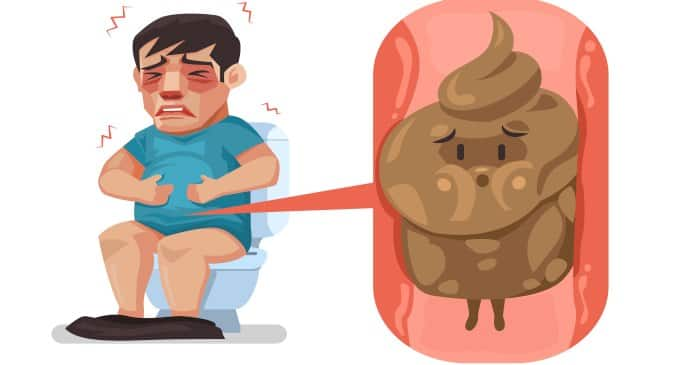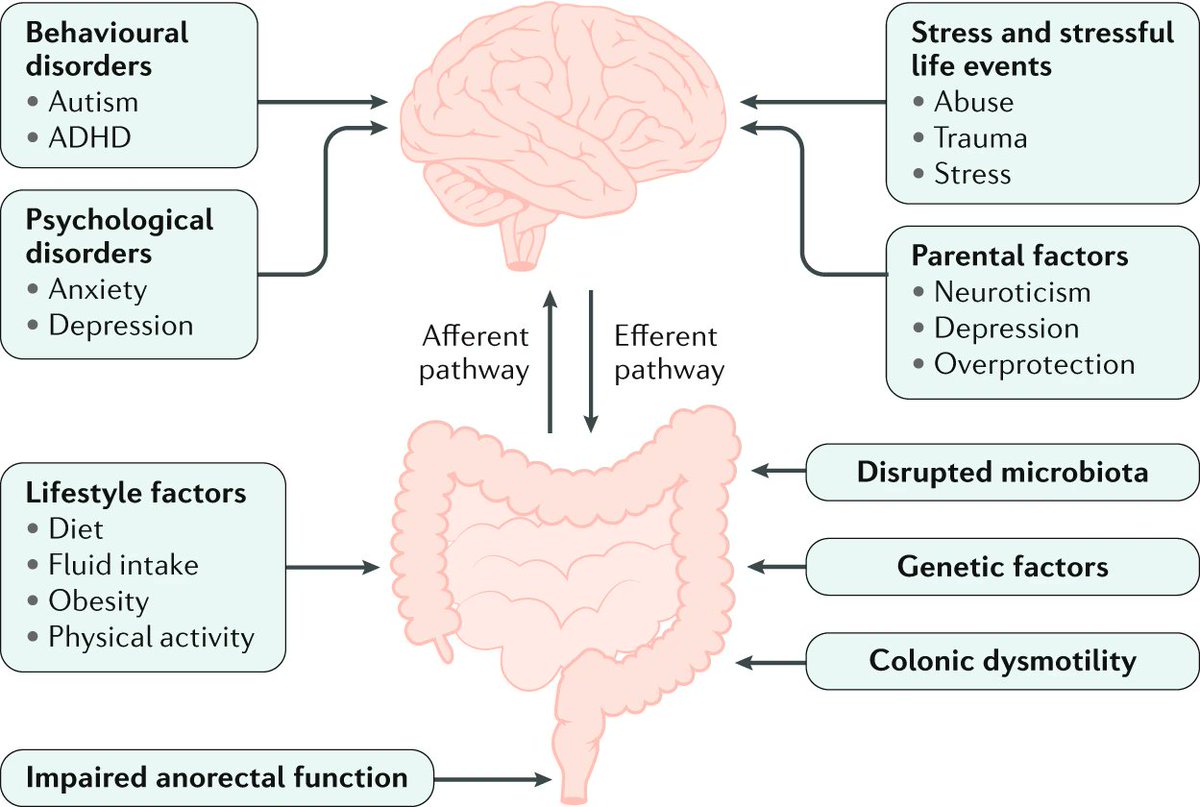Causes and treatment of constipation. Comprehensive Guide to Understanding and Managing Constipation
What is constipation? How common is it? What are the causes and risk factors? Explore the symptoms, treatment options, and prevention strategies for this common gastrointestinal issue.
Understanding Constipation
Constipation is a common gastrointestinal condition characterized by infrequent bowel movements, hard and dry stools, and difficulty passing them. But what exactly defines constipation, and how prevalent is it?
Definition and Prevalence of Constipation
Technically, having fewer than three bowel movements per week is considered constipation. However, the normal bowel movement pattern can vary widely from person to person, with some individuals having multiple movements per day and others only once or twice a week. As long as the pattern is consistent and comfortable for the individual, it is considered normal.
Constipation is one of the most frequent gastrointestinal complaints in the United States, affecting at least 2.5 million people who seek medical attention each year. Certain populations are more susceptible to chronic constipation, including older adults, pregnant women, and those with certain medical conditions or taking specific medications.
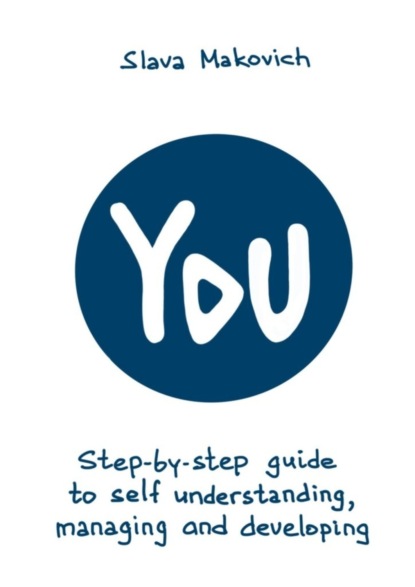
Causes and Risk Factors of Constipation
Constipation can have a variety of underlying causes, ranging from lifestyle factors to medical conditions and medications. Understanding the potential causes is crucial for effective management.
Lifestyle Factors
Common lifestyle-related causes of constipation include:
- Eating a diet low in fiber
- Insufficient fluid intake (dehydration)
- Lack of physical activity
- Disruptions to regular routines, such as traveling or changes in sleep patterns
- Excessive consumption of milk or cheese
- Stress
- Ignoring the urge to have a bowel movement
Medications
Certain medications can also contribute to constipation, including:
- Opioid pain relievers (e.g., codeine, oxycodone, hydromorphone)
- Nonsteroidal anti-inflammatory drugs (NSAIDs) like ibuprofen and naproxen
- Antidepressants
- Antacids containing aluminum or calcium
- Diuretics (water pills)
- Iron supplements
Medical Conditions
Underlying medical conditions can also lead to or exacerbate constipation, such as:

- Neurological disorders (e.g., Parkinson’s disease, multiple sclerosis, spinal cord injuries)
- Metabolic disorders (e.g., hypothyroidism, diabetes)
- Irritable bowel syndrome (IBS)
- Pregnancy
- Colorectal or pelvic floor disorders
Symptoms and Complications of Constipation
Constipation manifests through various symptoms, and if left untreated, it can lead to several complications. Recognizing these signs is crucial for seeking appropriate treatment.
Symptoms of Constipation
The primary symptoms of constipation include:
- Infrequent bowel movements (fewer than three per week)
- Hard, dry, and difficult-to-pass stools
- Straining during bowel movements
- Incomplete or unsatisfactory bowel movements
- Abdominal discomfort or bloating
Potential Complications
If constipation is left untreated, it can lead to several complications, including:
- Hemorrhoids (swollen, inflamed veins in the rectum)
- Anal fissures (tears in the lining of the anus)
- Diverticulitis (infection in pouches that form in the colon wall)
- Fecal impaction (buildup of hardened stool in the rectum and anus)
- Damage to pelvic floor muscles, leading to urinary incontinence
Diagnosing and Evaluating Constipation
Diagnosing the underlying cause of constipation often involves a combination of medical history, physical examination, and sometimes additional tests.

Medical History and Physical Exam
Your healthcare provider will likely start by asking about your bowel habits, any changes in your regular pattern, and any associated symptoms. They may also perform a physical examination, including a rectal exam, to check for any underlying issues.
Additional Tests
In some cases, your healthcare provider may order additional tests to rule out or identify specific causes of constipation, such as:
- Blood tests to check for underlying medical conditions
- Imaging tests (e.g., X-rays, colonoscopy) to evaluate the structure and function of the digestive system
- Anorectal manometry to assess the strength and coordination of the pelvic floor muscles
- Colorectal transit study to measure the time it takes for stool to move through the colon
Treating and Managing Constipation
The treatment approach for constipation often involves a combination of lifestyle modifications, over-the-counter remedies, and, in some cases, prescription medications or other therapies.
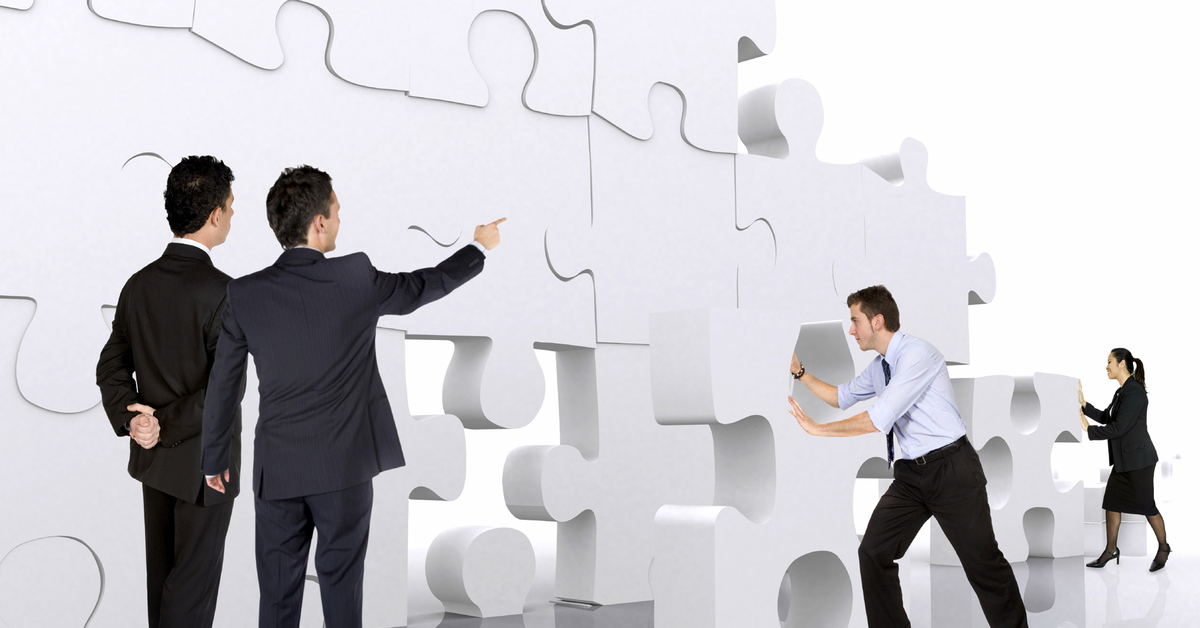
Lifestyle Modifications
The first line of defense against constipation is often making changes to your lifestyle and diet, including:
- Increasing fiber intake through fruits, vegetables, whole grains, and fiber supplements
- Staying hydrated by drinking plenty of water throughout the day
- Engaging in regular physical activity, such as walking or exercising
- Establishing a consistent and relaxed bowel routine
- Limiting the consumption of dairy products and foods that may exacerbate constipation
- Managing stress through relaxation techniques, such as meditation or yoga
Medications and Other Therapies
If lifestyle changes alone do not provide relief, your healthcare provider may recommend over-the-counter or prescription medications, such as:
- Laxatives (e.g., bulk-forming, osmotic, stimulant, or stool softeners)
- Enemas or suppositories
- Biofeedback therapy to improve pelvic floor muscle coordination
- Prescription medications for chronic constipation, if necessary
It’s important to discuss any medication or treatment plan with your healthcare provider to ensure it is safe and appropriate for your individual needs.
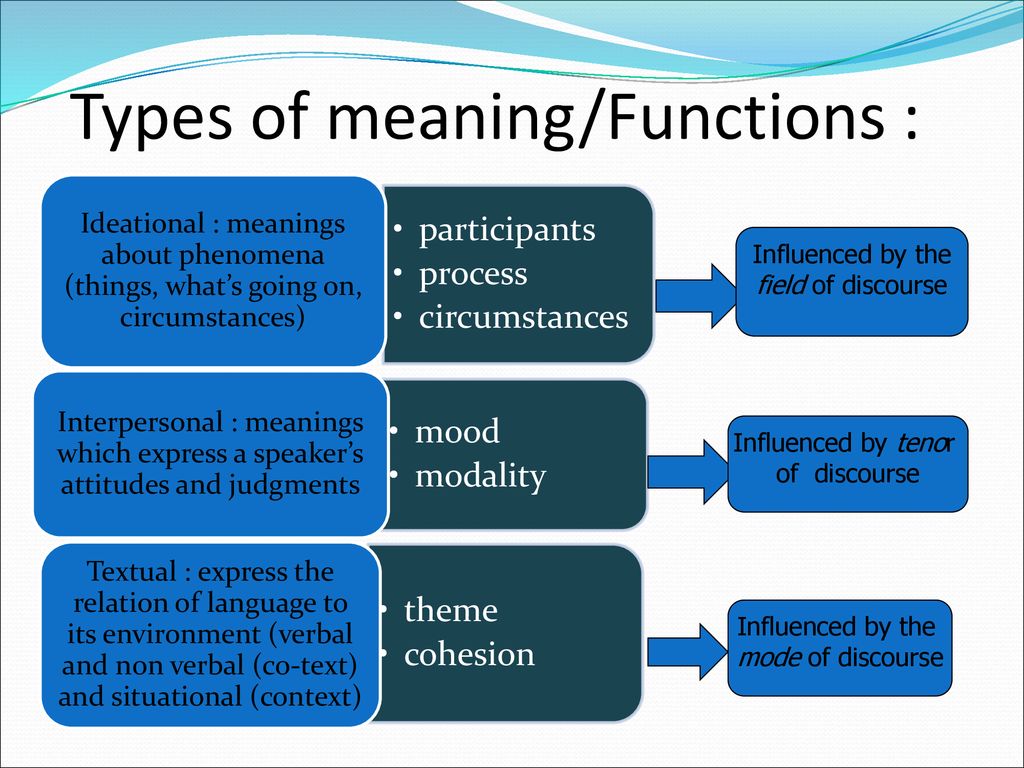
Preventing Constipation
While constipation can be a frustrating and uncomfortable condition, there are steps you can take to help prevent it from occurring or recurring:
Preventive Measures
- Maintain a high-fiber diet with plenty of fruits, vegetables, and whole grains
- Stay hydrated by drinking plenty of water throughout the day
- Engage in regular physical activity, such as walking or exercise
- Establish a consistent and relaxed bowel routine
- Avoid medications that can contribute to constipation, if possible
- Manage stress through relaxation techniques
- Seek medical attention if constipation persists or worsens
By understanding the causes, symptoms, and effective management strategies, individuals can take proactive steps to prevent and overcome the discomforts of constipation. Remember, if constipation becomes a persistent issue, it’s always best to consult with your healthcare provider for personalized guidance and treatment.
Constipation; Symptoms, Causes, Treatment & Prevention
Overview
What is constipation?
Having fewer than three bowel movements a week is, technically, the definition of constipation. However, how often you “go” varies widely from person to person. Some people have bowel movements several times a day while others have them only one to two times a week. Whatever your bowel movement pattern is, it’s unique and normal for you – as long as you don’t stray too far from your pattern.
Regardless of your bowel pattern, one fact is certain: the longer you go before you “go,” the more difficult it becomes for stool/poop to pass. Other key features that usually define constipation include:
- Your stools are dry and hard.
- Your bowel movement is painful and stools are difficult to pass.
- You have a feeling that you have not fully emptied your bowels.
How common is constipation?
You are not alone if you have constipation. Constipation is one of the most frequent gastrointestinal complaints in the United States. At least 2.5 million people see their doctor each year due to constipation.
Constipation is one of the most frequent gastrointestinal complaints in the United States. At least 2.5 million people see their doctor each year due to constipation.
People of all ages can have an occasional bout of constipation. There are also certain people and situations that are more likely to lead to becoming more consistently constipated (“chronic constipation”). These include:
- Older age. Older people tend to be less active, have a slower metabolism and less muscle contraction strength along their digestive tract than when they were younger.
- Being a woman, especially while you are pregnant and after childbirth. Changes in a woman’s hormones make them more prone to constipation. The baby inside the womb squishes the intestines, slowing down the passage of stool.
- Not eating enough high-fiber foods. High-fiber foods keep food moving through the digestive system.
- Taking certain medications (see causes).
- Having certain neurological (diseases of the brain and spinal cord) and digestive disorders (see causes).

How does constipation happen?
Constipation happens because your colon absorbs too much water from waste (stool/poop), which dries out the stool making it hard in consistency and difficult to push out of the body.
To back up a bit, as food normally moves through the digestive tract, nutrients are absorbed. The partially digested food (waste) that remains moves from the small intestine to the large intestine, also called the colon. The colon absorbs water from this waste, which creates a solid matter called stool. If you have constipation, food may move too slowly through the digestive tract. This gives the colon more time – too much time – to absorb water from the waste. The stool becomes dry, hard, and difficult to push out.
Pathway of food waste through colon, rectum and anus.
Can constipation cause internal damage or lead to other health problems?
There are a few complications that could happen if you don’t have soft, regular bowel movements.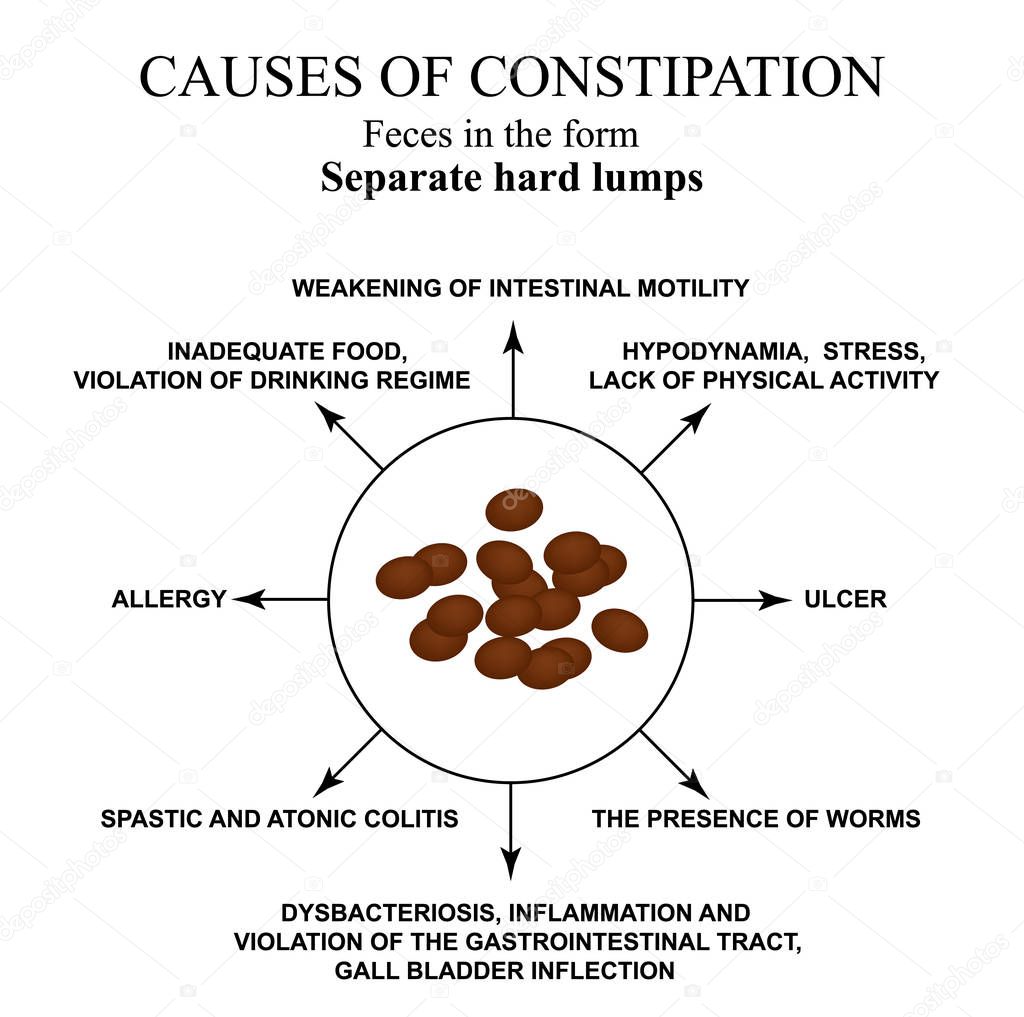 Some complications include:
Some complications include:
- Swollen, inflamed veins in your rectum (a condition called hemorrhoids).
- Tears in the lining of your anus from hardened stool trying to pass through (called anal fissures).
- An infection in pouches that sometimes form off the colon wall from stool that has become trapped and infected (a condition called diverticulitis)
- A pile-up of too much stool/poop in the rectum and anus (a condition called fecal impaction).
- Damage to your pelvic floor muscles from straining to move your bowels. These muscles help control your bladder. Too much straining for too long a period of time may cause urine to leak from the bladder (a condition called stress urinary incontinence).
Does not having regular bowel movements cause toxins to build up in my body and make me sick?
Don’t worry, this usually isn’t the case. Although your colon holds on to stool longer when you are constipated and you may feel uncomfortable, the colon is an expandable container for your waste. There is possibly a slight risk of a bacterial infection if waste gets into an existing wound in the colon or rectum.
There is possibly a slight risk of a bacterial infection if waste gets into an existing wound in the colon or rectum.
Symptoms and Causes
What causes constipation?
There are many causes of constipation – lifestyle choices, medications, medical conditions, and pregnancy.
Common lifestyle causes of constipation include:
- Eating foods low in fiber.
- Not drinking enough water (dehydration).
- Not getting enough exercise.
- Changes in your regular routine, such as traveling or eating or going to bed at different times.
- Eating large amounts of milk or cheese.
- Stress.
- Resisting the urge to have a bowel movement.
Medications that can cause constipation include:
- Strong pain medicines, like the narcotics containing codeine, oxycodone (Oxycontin®) and hydromorphone (Dilaudid®).
- Nonsteroidal anti-inflammatory drugs, like ibuprofen (Advil®, Motrin®) and naproxen (Aleve®).

- Antidepressants, including the selective serotonin reuptake inhibitors (like fluoxetine [Prozac®]) or tricyclic antidepressants (like amitriptyline [Elavil®]).
- Antacids containing calcium or aluminum, such as Tums®.
- Iron pills.
- Allergy medications, such as antihistamines (like diphenhydramine [Benadryl®]).
- Certain blood pressure medicines, including calcium channel blockers (like verapamil [Calan SR], diltiazem [Cardizem®] and nifedipine [Procardia®]) and beta-blockers (like atenolol [Tenormin®]).
- Psychiatric medications, like clozapine (Clozaril®) and olanzapine (Zyprexa®).
- Anticonvulsant/seizure medications, such as phenytoin and gabapentin.
- Antinausea medications, like ondansetron (Zofran®).
Many drugs can cause constipation. Ask your doctor or pharmacist if you have any questions or concerns.
Medical and health conditions that can cause constipation include:
- Endocrine problems, like underactive thyroid gland (hypothyroidism), diabetes, uremia, hypercalcemia.

- Colorectal cancer.
- Irritable bowel syndrome (IBS).
- Diverticular disease.
- Outlet dysfunction constipation. (A defect in the coordination of pelvic floor muscles. These muscles support the organs within the pelvis and lower abdomen. They are needed to help release stool.)
- Neurologic disorders including spinal cord injury, multiple sclerosis, Parkinson’s disease, and stroke.
- Lazy bowel syndrome. The colon contracts poorly and retains stool.
- Intestinal obstruction.
- Structural defects in the digestive tract (like fistula, colonic atresia, volvulus, intussusception, imperforate anus, or malrotation.)
- Multiple organ diseases, such as amyloidosis, lupus, and scleroderma.
- Pregnancy.
What are the symptoms of constipation?
Symptoms of constipation include:
- You have fewer than three bowel movements a week.
- Your stools are dry, hard and/or lumpy.
- Your stools are difficult or painful to pass.

- You have a stomach ache or cramps.
- You feel bloated and nauseous.
- You feel that you haven’t completely emptied your bowels after a movement.
Diagnosis and Tests
What should I expect when I talk to my doctor about my constipation?
Talking to your doctor – or anyone – about your bowel movements (or lack of them) is not the most pleasant of topics. Know that your doctor is there for you. Doctors are trained health professionals who have discussed just about every health topic you can think of with their patients.
Your doctor will first ask you questions about your medical history, bowel movements, and your lifestyle and routines.
Medical history
These questions may include:
- What are your current and past diseases/health conditions?
- Have you lost or gained any weight recently?
- Have you had any previous digestive tract surgeries?
- What medications and supplements do you take for other disorders and for the relief of constipation?
- Does anyone in your family have constipation or diseases of the digestive tract or a history of colon cancer?
- Have you had a colonoscopy?
Bowel movement history
These questions may include:
- How often do you have a bowel movement?
- What do your stools look like?
- Have you noticed any blood or red streaks in your stool?
- Have you ever seen blood in the toilet bowl or on the toilet paper after you wipe?
Lifestyle habits and routines
- What food and beverages do you eat and drink?
- What is your exercise routine?
Your doctor will also perform a physical exam, which includes a check of your vital signs (temperature, pulse, blood pressure). He or she will use a stethoscope to listen to the sounds in your abdomen. Your abdomen will also be touched to check for pain, tenderness, swelling, and lumps.
He or she will use a stethoscope to listen to the sounds in your abdomen. Your abdomen will also be touched to check for pain, tenderness, swelling, and lumps.
Be aware that your doctor will also perform a rectal exam. This is a finger exam of the inside of your rectum. It’s a quick check for any masses or problems that can be felt by finger.
What lab tests and other medical tests may be done to find the cause of my constipation?
Your doctor can order no tests or many types of tests and procedures. The decision of which ones your doctor might order for you depends on your symptoms, medical history, and overall health.
Lab tests: Blood and urine tests reveal signs of hypothyroidism, anemia, and diabetes. A stool sample checks for signs of infection, inflammation, and cancer.
Imaging tests: Computed tomography (CT), magnetic resonance imaging (MRI) or lower gastrointestinal tract series may be ordered to identify other problems that could be causing your constipation.
Colonoscopy: A colonoscopy or sigmoidoscopy– an internal view of your colon with a scope – may be performed. During this procedure, a small sample of tissue (biopsy) may be taken to test for cancer or other problems and any found polyps will be removed.
Colorectal transit studies: These tests involve consuming a small dose of a radioactive substance, either in pill form or in a meal, and then tracking both the amount of time and how the substance moves through your intestines.
Other bowel function tests: Your doctor may order tests that check how well your anus and rectum hold and release stool. These tests include a certain type of x-ray (defecography), done to rule out causes of outlet dysfunction constipation, and the insertion of a small balloon into the rectum (balloon expulsion test and anorectal manometry).
Management and Treatment
How is constipation treated?
Self-care
Most cases of mild to moderate constipation can be managed by you at home. Self-care starts by taking an inventory of what you eat and drink and then making changes.
Self-care starts by taking an inventory of what you eat and drink and then making changes.
Some recommendations to help relieve your constipation include:
- Drink two to four extra glasses of water a day. Avoid caffeine-containing drinks and alcohol, which can cause dehydration.
- Add fruits, vegetables whole grains and other high-fiber foods to your diet. Eat fewer high-fat foods, like meat, eggs and cheese.
- Eat prunes and/or bran cereal.
- Keep a food diary and single out foods that constipate you.
- Get moving, exercise.
- Check how you sit on the toilet. Raising your feet, leaning back or squatting may make having a bowel movement easier.
- Add an over-the-counter supplemental fiber to your diet (like Metamucil®, Citrucel®, and Benefiber®).
- If needed, take a very mild over-the-counter stool softener or laxative (such as docusate [Colace®] or Milk of Magnesia®). Mineral oil enemas, like Fleet®, and stimulant laxatives, like bisacodyl (Dulcolax®) or senna (Senokot®), are other options.
 There are many laxative choices. Ask your pharmacist or doctor for help in making a choice. Do not use laxatives for more than two weeks without calling your doctor. Overuse of laxatives can worsen your symptoms.
There are many laxative choices. Ask your pharmacist or doctor for help in making a choice. Do not use laxatives for more than two weeks without calling your doctor. Overuse of laxatives can worsen your symptoms. - Do not read, use your phone or other devices while trying to move your bowels.
Medication/supplement review
In addition to self-care methods, your doctor will review your medications and supplements (if you take any). Some of these products can cause constipation. If they do, your doctor may change the dose, switch to another drug and/or ask that you stop taking the supplement. Never stop taking your medications or supplements before talking with your doctor first.
Prescription medications
A few prescription drugs are available to treat constipation. These include lubiprostone (Amitiza®), prucalopride (Prudac®, Motegrity®), plecanatide (Trulance®), lactulose (Cephulac®, Kristalose®) and linaclotide (Linzess®). Your doctor will pick the drug that might work best for you based on the results of your tests.
Your doctor will pick the drug that might work best for you based on the results of your tests.
Surgery
Surgery is rarely needed to treat constipation. Your doctor may, however, recommend surgery if constipation is caused by a structural problem in the colon. Examples of these problems include a blockage in the colon (intestinal obstruction), a narrowing in a portion of the intestine (intestinal stricture), tear in the anus (anal fissure) or the collapse of part of the rectum into the vagina (rectal prolapse). Some causes of outlet dysfunction constipation may be treated with surgery. This is best discussed after testing. You may also need surgery if cancer was found in your colon, rectum or anus.
Prevention
How can I prevent constipation?
Use the same home-based methods you used to treat constipation to prevent it from becoming a chronic problem:
- Eat a well-balanced diet with plenty of fiber. Good sources of fiber are fruits, vegetables, legumes, and whole-grain breads and cereals.
 Fiber and water help the colon pass stool. Most of the fiber in fruits is found in the skins, such as in apples. Fruits with seeds you can eat, like strawberries, have the most fiber. Bran is a great source of fiber. Eat bran cereal or add bran cereal to other foods, like soup and yogurt. People with constipation should eat between 18 and 30 grams of fiber every day.
Fiber and water help the colon pass stool. Most of the fiber in fruits is found in the skins, such as in apples. Fruits with seeds you can eat, like strawberries, have the most fiber. Bran is a great source of fiber. Eat bran cereal or add bran cereal to other foods, like soup and yogurt. People with constipation should eat between 18 and 30 grams of fiber every day. - Drink eight 8-ounce glasses of water a day. (Note: Milk can cause constipation in some people.) Liquids that contain caffeine, such as coffee and soft drinks, can dehydrate you. You may need to stop drinking these products until your bowel habits return to normal.
- Exercise regularly.
- Treat mild constipation with a dietary supplement like magnesium. (Not everyone should take magnesium. Check with your doctor before taking.)
- Move your bowels when you feel the urge. Do not wait.
Living With
When should I call my doctor?
Call your healthcare provider if:
- Constipation is a new problem for you.

- You see blood in your stool.
- You are losing weight unintentionally.
- You have severe pain with bowel movements.
- Your constipation has lasted more than three weeks.
- You have symptoms of outlet dysfunction constipation.
Remember, talk openly and honestly with your doctor about your bowel movements and any questions or concerns you may have. Pooping is something we all should be doing. Constipation may be a temporary situation, a long-term problem or a sign of a more serious condition. Be safe. See your doctor, especially if you’ve noticed a change in your bowel pattern or if your life is being ruled by your bowels.
Large Bowel (Intestinal) Obstruction: Symptoms, Treatment & Causes
Overview
What is a large bowel (intestinal) obstruction?
A large bowel (large intestine) obstruction is a blockage that keeps gas or stool from passing through the body. An intestinal blockage can occur anywhere in the large intestine.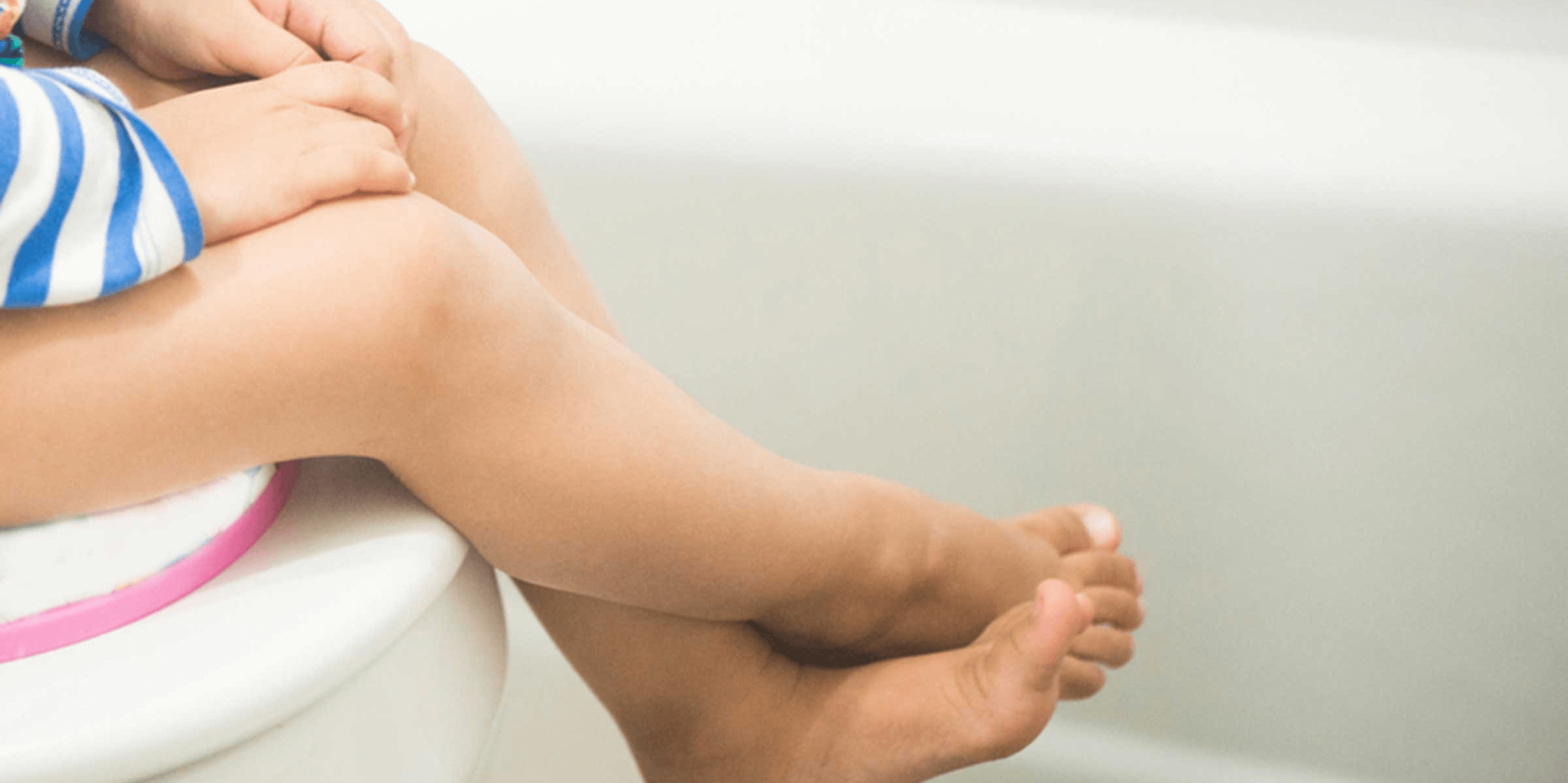
The large bowel obstruction may block the bowel completely or partially. A blocked intestine may rupture, causing a life-threatening infection.
What is the large bowel (large intestine)?
The large bowel or large intestine is part of the digestive system. It includes the colon and rectum.
The large intestine plays a vital role in removing waste from the body. Liquid food waste from the small intestine goes into the large intestine, where it turns solid. You pass this solid waste as stool when you poop.
How common are large bowel obstructions?
Large bowel obstructions account for about 20% of all intestinal blockages. Small bowel obstructions are more common.
Symptoms and Causes
What causes a large bowel obstruction?
People of all ages and genders can get large bowel obstructions.
Some infants are born with a birth defect called malrotation. The intestines don’t form properly. This condition can cause the intestines to twist (volvulus), causing a blockage.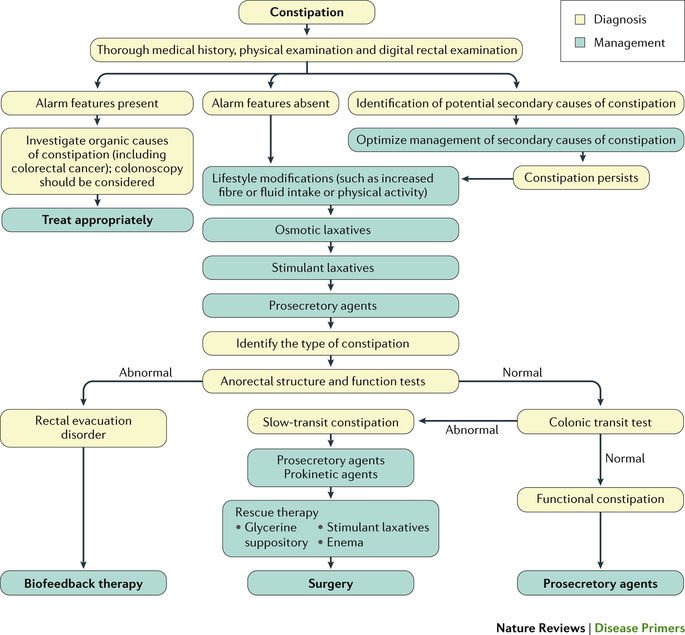
In children younger than three, a disorder called intussusception may cause blockages. In children with this problem, one segment of the intestine collapses inside another segment (like a telescope). The collapsed segments can block the bowel and blood flow.
Up to half of adults who develop a large bowel obstruction have colorectal (colon) cancer. A cancerous tumor causes the blockage.
Other causes of bowel obstructions in adults include:
What are the symptoms of large bowel obstruction?
You may have sharp stomach pains that come in waves. Eventually, the pain becomes constant. You may also have one or more of these symptoms:
Infants and children experience the same symptoms as adults. Infants can’t tell you where it hurts, but they may pull their legs up toward their bellies and cry. Other symptoms of bowel obstructions in children include:
- Fever.
- Blood in stool (rectal bleeding).
- Green or yellow-green vomit.
- Lethargy.

- Swollen, firm belly.
Diagnosis and Tests
How is a large bowel obstruction diagnosed?
Your healthcare provider will perform a physical exam to check for a swollen abdomen or masses. Usually, the stomach isn’t tender to touch.
Your healthcare provider will use a stethoscope to listen to the intestines. Loud or high-pitched bowel sounds or a quiet bowel may indicate a problem.
Your provider may order these tests:
- Blood tests: A blood test checks for signs of infection and dehydration.
- X-rays: Abdominal X-rays can show a bowel blockage’s location. These images can also show air around the intestine or diaphragm (the muscle that separates the stomach and chest). Air in these places can indicate a dead bowel or rupture.
- CT scan: If x-rays reveal a problem, your provider may perform a CT scan. This imaging procedure provides more detailed photos than x-rays.

- Barium enema x-ray: A barium enema x-ray is a lower gastrointestinal (GI) exam. While you are sedated with anesthesia, a provider inserts a catheter (thin tube) into the anus. The catheter fills the intestine with a safe, white barium liquid. This liquid travels through the intestine while a machine takes x-rays.
Management and Treatment
What are the complications of large bowel obstruction?
A bowel blockage can stop blood flow, causing part of the intestine to die. As pressure builds up from the blockage, intestinal bacteria can leak into the bloodstream.
You may develop peritonitis, an abdominal infection. You are also at risk for a life-threatening system-wide infection called sepsis.
Your healthcare provider may surgically remove a segment of dead intestine. In that case, you may need a colostomy. With a colostomy, poop empties into a sealed bag outside your body.
How is a large bowel obstruction managed or treated?
A large bowel obstruction is a medical emergency. It requires hospitalization. Partial bowel obstructions, especially those due to scarring or adhesions, may clear up without much medical help.
It requires hospitalization. Partial bowel obstructions, especially those due to scarring or adhesions, may clear up without much medical help.
Treatments for large bowel obstructions include:
- IV fluid replacement: IV fluids and electrolytes (sodium, chloride and potassium) treat dehydration.
- Medications: Anti-nausea medicine and pain relievers can keep you more comfortable.
- Nasogastric tube: Your healthcare provider inserts a long, thin tube through your nose. The tube reaches into the stomach or intestine. It suctions out fluids backed up from the blockage.
- Barium enema: The same endoscopic procedure to detect a blockage can also treat some problems, such as a twisted intestine.
- Surgery: Your healthcare provider may remove adhesions or tumors that are causing a blockage. Or surgery can fix a hernia. Your provider may place a stent (a mesh tube) to keep the intestine open.
 Rarely, a provider must remove a segment of the damaged or dead intestine.
Rarely, a provider must remove a segment of the damaged or dead intestine.
Prevention
How do I prevent a large bowel obstruction?
Unfortunately, there is no known way to prevent large bowel obstructions.
Outlook / Prognosis
What is the prognosis (outlook) for people who have a large bowel obstruction?
Most people with large bowel obstructions improve after treatment. Their bowels start to function again.
If an obstruction causes a rupture, the condition can be life-threatening.
Living With
When should I call my healthcare provider?
You should call your healthcare provider if you experience:
- Fever.
- Persistent vomiting.
- Severe abdominal pain or cramping that comes and goes.
- Signs of dehydration.
What questions should I ask my healthcare provider?
You may want to ask your healthcare provider:
- Why did I get a large bowel obstruction?
- What is the best treatment for a large bowel obstruction?
- Am I at risk for another large bowel obstruction?
- How can I prevent another large bowel obstruction?
- Should I look out for signs of complications?
A note from Cleveland Clinic
A large bowel obstruction is a serious medical emergency. Not all bowel blockages require surgery. But you still need to be in the hospital. There, your healthcare provider can treat dehydration and drain excess fluid. This care can prevent more serious problems. Most surgically treated bowel blockages improve, resulting in normal bowel function afterward.
Not all bowel blockages require surgery. But you still need to be in the hospital. There, your healthcare provider can treat dehydration and drain excess fluid. This care can prevent more serious problems. Most surgically treated bowel blockages improve, resulting in normal bowel function afterward.
Leakage, Causes, Diagnosis, Treatment & Prevention
Overview
What is incontinence?
Urinary incontinence is a condition that impacts many people’s lives. When you have incontinence, you may experience bladder control issues and leak urine. This leakage is often uncontrollable and can negatively impact your life.
Your urinary system is made up of the kidneys, ureters, bladder and urethra. These parts do several jobs. They filter, store and remove waste from your body. Your kidneys are the filters of your body. Waste products are removed from your blood by the kidneys, creating urine. The urine then moves down through two thin tubes called the ureters.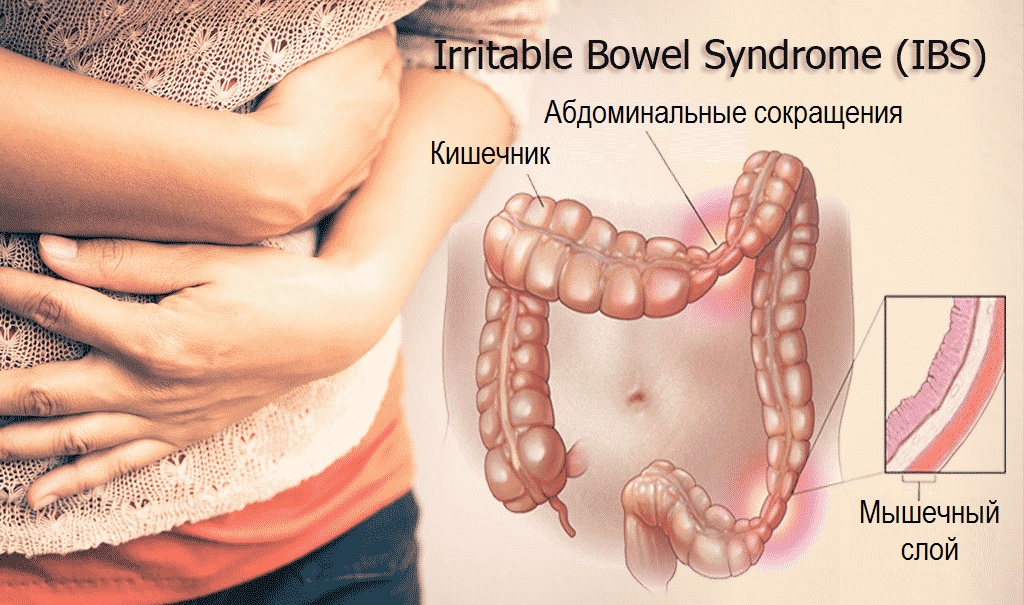 The ureters connect to the bladder, where the urine will collect until it’s time to leave the body. Your bladder is like a storage tank — once the bladder is full, the brain sends a signal that it’s time to urinate. Urine then leaves the bladder when a muscle opens up (sphincter), allowing the urine to flow freely out of the body through the urethra.
The ureters connect to the bladder, where the urine will collect until it’s time to leave the body. Your bladder is like a storage tank — once the bladder is full, the brain sends a signal that it’s time to urinate. Urine then leaves the bladder when a muscle opens up (sphincter), allowing the urine to flow freely out of the body through the urethra.
When this system is working smoothly, you usually have time to get to a bathroom before needing to urinate and you don’t experience any leakage of urine. Urinary incontinence can happen when these parts don’t operate as they should. This can happen for many different reasons throughout your life.
Many people think that incontinence is a normal part of aging that can’t be helped. While it is true that your risk of incontinence increases as you get older, there are also treatments available to help you manage this condition. Incontinence doesn’t have to disrupt your life and keep you from being active.
What are the different types of incontinence?
There are several different types of incontinence. These types have different causes, characteristics and triggers for urine leakage. Knowing the type of incontinence is often an important part of the diagnosis and treatment plan for incontinence.
These types have different causes, characteristics and triggers for urine leakage. Knowing the type of incontinence is often an important part of the diagnosis and treatment plan for incontinence.
The types of incontinence include:
- Urge incontinence: This type of incontinence is characterized by an intense need to urinate right away. Often, this happens too quickly for you to make it to a toilet and you end up leaking urine. Urge incontinence can be caused by a condition called overactive bladder (OAB). You could have OAB for a variety of reasons like having weak pelvic muscles, nerve damage, an infection, low levels of estrogen after menopause or a heavier body weight. Some medications and beverages like alcohol and caffeine can also cause OAB.
- Stress incontinence: When you leak urine during activities, this is often stress incontinence. In this type of incontinence, your pelvic floor muscles are weak and no longer support your pelvic organs as they should.
 This muscle weakness means that you’re more likely to accidently leak urine when you move around. For many people, leakage issues happen when they laugh, cough, sneeze, run, jump or lift things. These actions all place pressure on your bladder. Without the support of strong pelvic muscles, you’re more likely to leak urine. Women who have given birth are at a higher risk of having stress incontinence. Men who have had prostate surgery may develop stress incontinence.
This muscle weakness means that you’re more likely to accidently leak urine when you move around. For many people, leakage issues happen when they laugh, cough, sneeze, run, jump or lift things. These actions all place pressure on your bladder. Without the support of strong pelvic muscles, you’re more likely to leak urine. Women who have given birth are at a higher risk of having stress incontinence. Men who have had prostate surgery may develop stress incontinence. - Overflow incontinence: If your bladder doesn’t empty completely each time you urinate, you could have overflow incontinence. Think of the bladder as a juice jug. If you only pour some of the juice out of the jug, but not all of it, there’s still a risk that you could spill when you move around. People with overflow incontinence never completely empty the bladder — placing them at risk for a spill. Usually, this results in small amounts of urine dripping out over time instead of one big gush of urine.
 This type of incontinence is more common in people with chronic conditions like multiple sclerosis (MS), stroke or diabetes. This may also occur in men with a large prostate.
This type of incontinence is more common in people with chronic conditions like multiple sclerosis (MS), stroke or diabetes. This may also occur in men with a large prostate. - Mixed incontinence: This type of incontinence is a combination of several problems that all lead to leakage issues. When you have mixed incontinence, you might be dealing with stress incontinence and an overactive bladder. It’s often important to pay attention to what you’re doing when you have leakage issues with this type of incontinence. Identifying what triggers mixed incontinence is usually the best way to manage it.
Who gets incontinence?
Incontinence can happen to anyone. However, it’s more common in certain groups and at certain times in your life. Incontinence is much more common in women than in men. This is often related to pregnancy, childbirth and menopause. Each of these experiences can cause a woman’s pelvic support muscles to weaken over time.
You’re also more likely to experience incontinence as you get older.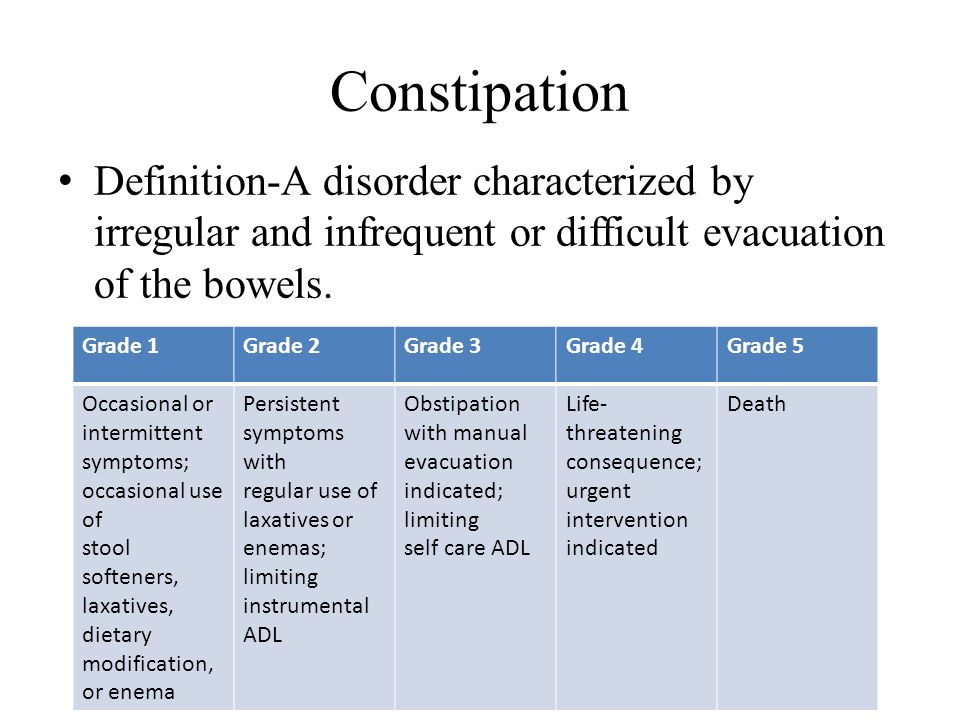 The muscles that support your pelvic organs can become weaker over time, causing you to experience leakage issues.
The muscles that support your pelvic organs can become weaker over time, causing you to experience leakage issues.
Am I at a higher risk of incontinence at an older age?
Your body constantly changes throughout your life. As you age, the muscles that support your pelvic organs can weaken. This means that your bladder and urethra have less support — often leading to urine leakage. Your risk for developing incontinence as you age might be higher if you have a chronic health condition, have given birth to children, went through menopause, have an enlarged prostate or have had prostate cancer surgery. It’s important to talk to your healthcare provider over time about the risks of incontinence and ways you can manage it without interference to your daily life.
Is incontinence more common in women?
Incontinence is much more commonly seen in women than in men. A large part of this is because of pregnancy, childbirth and menopause. Each of these events in a woman’s life can lead to bladder control issues.![]() Pregnancy can be a short-term cause of incontinence and the bladder control issues typically get better after the baby is born. Some women experience incontinence after delivery because of the strain childbirth takes on the pelvic floor muscles. When these muscles are weakened, you’re more likely to experience leakage issues. Menopause causes your body to go through a lot of change. Your hormones (estrogen in particular) change during menopause and this can alter your bladder control.
Pregnancy can be a short-term cause of incontinence and the bladder control issues typically get better after the baby is born. Some women experience incontinence after delivery because of the strain childbirth takes on the pelvic floor muscles. When these muscles are weakened, you’re more likely to experience leakage issues. Menopause causes your body to go through a lot of change. Your hormones (estrogen in particular) change during menopause and this can alter your bladder control.
Men can also experience incontinence, but it isn’t as common as it is in women.
Symptoms and Causes
What causes incontinence?
There are many different reasons that you could experience incontinence. These causes can vary depending on if you’re a woman or man. Some causes are temporary health conditions that usually go away once treated. In those cases, your incontinence also usually stops once the condition is treated. Incontinence can be caused by long-term (chronic) medical conditions. When you experience leakage issues because of a chronic condition, it’s usually something you will have to manage over a longer period of time. Even with treatment, chronic conditions usually don’t go away. Incontinence may have to be managed over time as a symptom of your chronic condition.
When you experience leakage issues because of a chronic condition, it’s usually something you will have to manage over a longer period of time. Even with treatment, chronic conditions usually don’t go away. Incontinence may have to be managed over time as a symptom of your chronic condition.
Temporary or short-term causes of incontinence can include:
- Urinary tract infections (UTIs): An infection inside your urinary tract (urethra, ureters, bladder and kidneys) can cause pain and increase your need to pee more often. Once treated, the urge to urinate frequently usually goes away.
- Pregnancy: During pregnancy, your uterus places extra pressure on the bladder as it expands. Most women who experience incontinence during pregnancy notice that it goes away in the weeks after delivery.
- Medications: Incontinence can be a side effect of certain medications, including diuretics and antidepressants.
- Beverages: There are certain drinks — like coffee and alcohol — that can make you need to urinate much more often.
 If you stop drinking these beverages, your need to urinate frequently typically goes down.
If you stop drinking these beverages, your need to urinate frequently typically goes down. - Constipation: Chronic constipation (stool that’s hard and dry) can cause you to have bladder control issues.
Chronic or long-term causes of incontinence can include:
- Pelvic floor disorders: When you have an issue with your pelvic floor muscles, it can impact the way your organs function, including your bladder.
- Stroke: A stroke can cause you to experience issues with muscle control. This can include the muscles that control your urinary system.
- Diabetes: When you have diabetes, your body produces more urine. This increase in the amount of urine can cause leakage issues. In addition, peripheral neuropathy can affect the bladder’s function.
- Menopause: Menopause is another time of change in a woman’s body when hormone levels change rapidly and pelvic floor muscles can also become weaker — something that also can happen as you get older.

- Multiple sclerosis (MS): If you have MS, you may experience a loss of control with your bladder, leading to leakage issues.
- Enlarged prostate: When the prostate is larger than normal, it can cause several bladder control issues. You might also hear this condition called benign prostatic hyperplasia, or BPH.
- After prostate cancer surgery: During prostate cancer surgery the sphincter muscle can sometimes be damaged leading to stress incontinence.
Why does pregnancy cause incontinence?
During pregnancy, your body goes through a lot of physical changes. As your uterus stretches to hold the growing baby, a few things happen. Your bladder can be squished by the expanding baby, making your bladder hold less than before. You might experience an increased urgency to pee during pregnancy because your bladder cannot hold as much as before. This might become even more challenging towards the end of pregnancy when the baby is at its largest./GettyImages-1081531492-8219f1a3105c405592824ad205612756.jpg)
Another reason for incontinence during pregnancy is the weakening of your pelvic floor muscles. These muscles are the support structures for all of the organs in your pelvis. During pregnancy, they can be stretched and weakened as your uterus expands.
What are the symptoms of incontinence?
The main symptom of incontinence is a leakage of urine. This could be a constant dripping of urine or an occasional experience of leakage. If you have incontinence, you might have large amounts or small amounts of leaked urine. You might experience leakage for a wide variety of reasons — often depending on the type of incontinence you have.
You might leak urine when you:
- Exercise.
- Cough.
- Laugh.
- Sneeze.
- Have an urge to urinate, but can’t make it to the toilet on time.
- Have to get up in the middle of night to urinate (nocturia).
Diagnosis and Tests
How is incontinence diagnosed?
Often, the diagnosis process for incontinence will start with a conversation with your healthcare provider about your medical history and bladder control issues.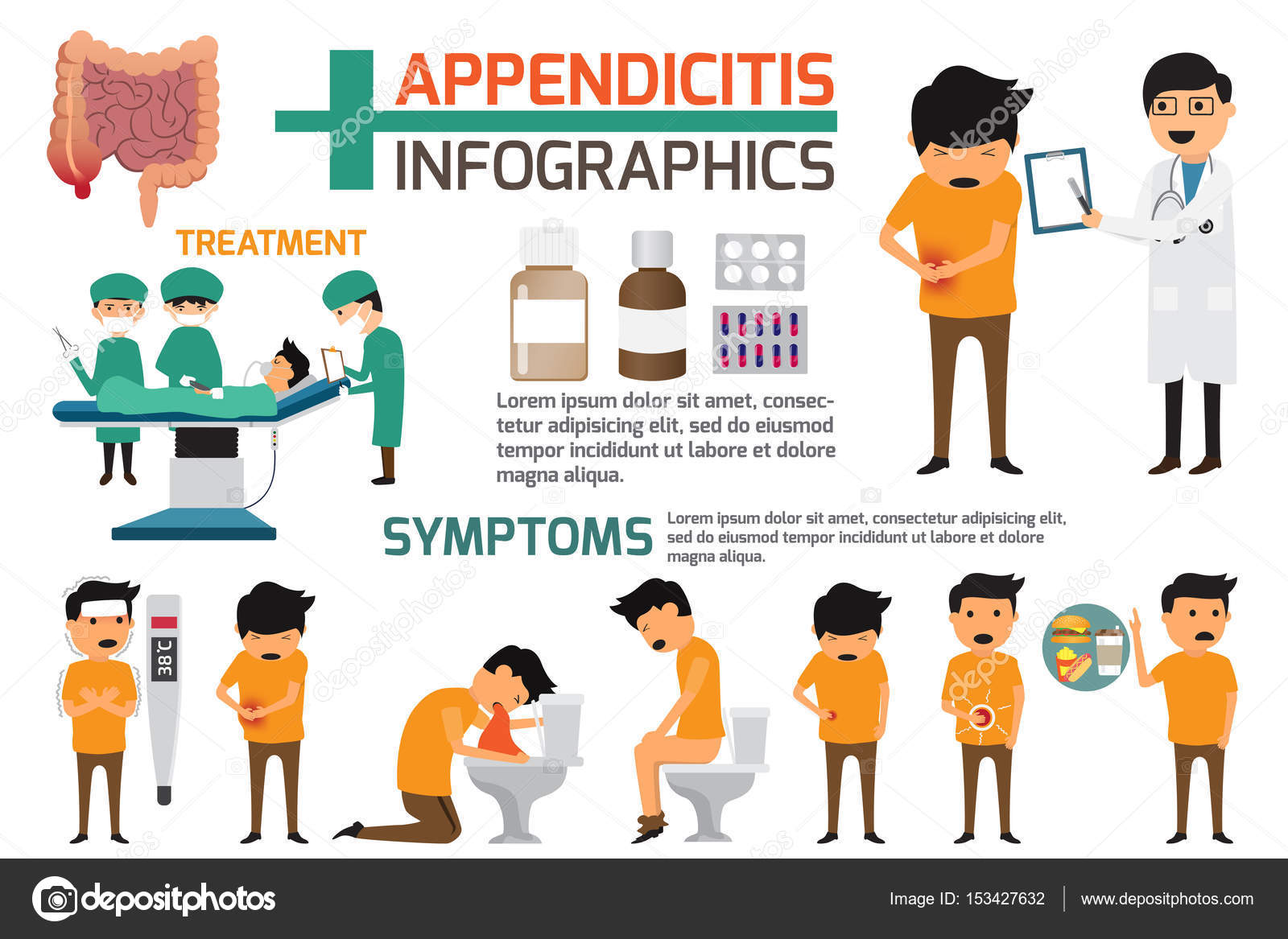 Your provider might ask you questions like:
Your provider might ask you questions like:
- How often do you urinate?
- Do you leak urine between trips to the toilet, how often does this happen and how much urine do you leak each time?
- How long have you been experiencing incontinence?
These questions can help your provider figure out a pattern with your leakage, which often points to a specific type of incontinence. When your provider is asking about your medical history, it’s important to list all of your medications because some medications can cause incontinence. Your provider will also ask about any past pregnancies and the details around each delivery.
There are also several specific tests that your provider might do to diagnose incontinence, including:
- Physical exam: Your healthcare provider will typically do a physical exam early in the diagnosis process. During this exam, your provider will look for any physical reason that could be causing your incontinence.
 This could include doing a pelvic exam if you’re a woman or checking the size of a man’s prostate.
This could include doing a pelvic exam if you’re a woman or checking the size of a man’s prostate. - Urine samples: Your provider may take samples of your urine to test for infections or blood. Testing your urine is also called urinalysis.
- An ultrasound of your bladder: An ultrasound is a painless test that uses sound waves to create an image of your internal organs. This imaging test will allow your provider to look at the contents of your bladder and assess the emptying ability of your bladder in a non-invasive way.
- Stress test: During this test, your provider will ask you to cough to see if any urine leaks from this action. If you’ve noticed leakage during other activities, like running or jumping, your provider may ask you to repeat those actions to see if you have a leakage issue.
- Cystoscopy: A cystoscope is a thin flexible tube with a camera on the end that can be inserted into your urethra and bladder to get a close look at the inside of your urinary tract.
 This tool allows your provider to see a lot of detail inside your body.
This tool allows your provider to see a lot of detail inside your body. - Urodynamic testing: This testing involves several tests that check how much your bladder can hold and how well your urethral sphincter muscle (the muscle that holds your urethra shut) is working. One part of this testing may involve inserting a tube into your bladder that will fill the bladder up with fluid. This checks how much your bladder can actually hold.
- Pad test: Your provider may give you a pad to wear, which will catch any leaked urine. At the end of the test, this pad will be checked to see how much urine you lost.
While at home, your provider might recommend you keep track of any leakage in a journal for a few days. By writing down how often you experience incontinence issues over the span of a few days, your provider might be able to identify a pattern. This can really help in the diagnosis process. Make sure to write down how often you need to urinate, how much you are able to go each time, if you leak between trips to the bathroom and any activities you might be doing when you leak urine.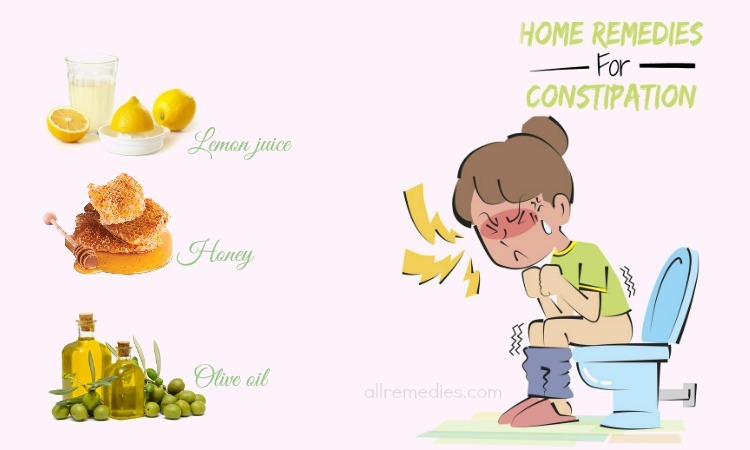 You’ll then bring this journal with you to your appointment and talk about it with your provider.
You’ll then bring this journal with you to your appointment and talk about it with your provider.
When should I see a doctor about incontinence?
It’s important to know that incontinence can be treated. Many people believe that it’s something that just goes along with aging and is an unavoidable issue. If you find that incontinence is disturbing your daily activities and causing you to miss out on things you typically enjoy, talk to your healthcare provider. There are a wide range of options to treat incontinence.
Management and Treatment
How is incontinence treated?
There are many different factors that your healthcare provider will consider when creating a treatment plan for your incontinence. The type of incontinence and the ways it affects your life are both big considerations. Your provider will also talk to you about the type of treatment you are most comfortable with. There are three main types of treatment you can explore for incontinence — medications, lifestyle changes and surgery.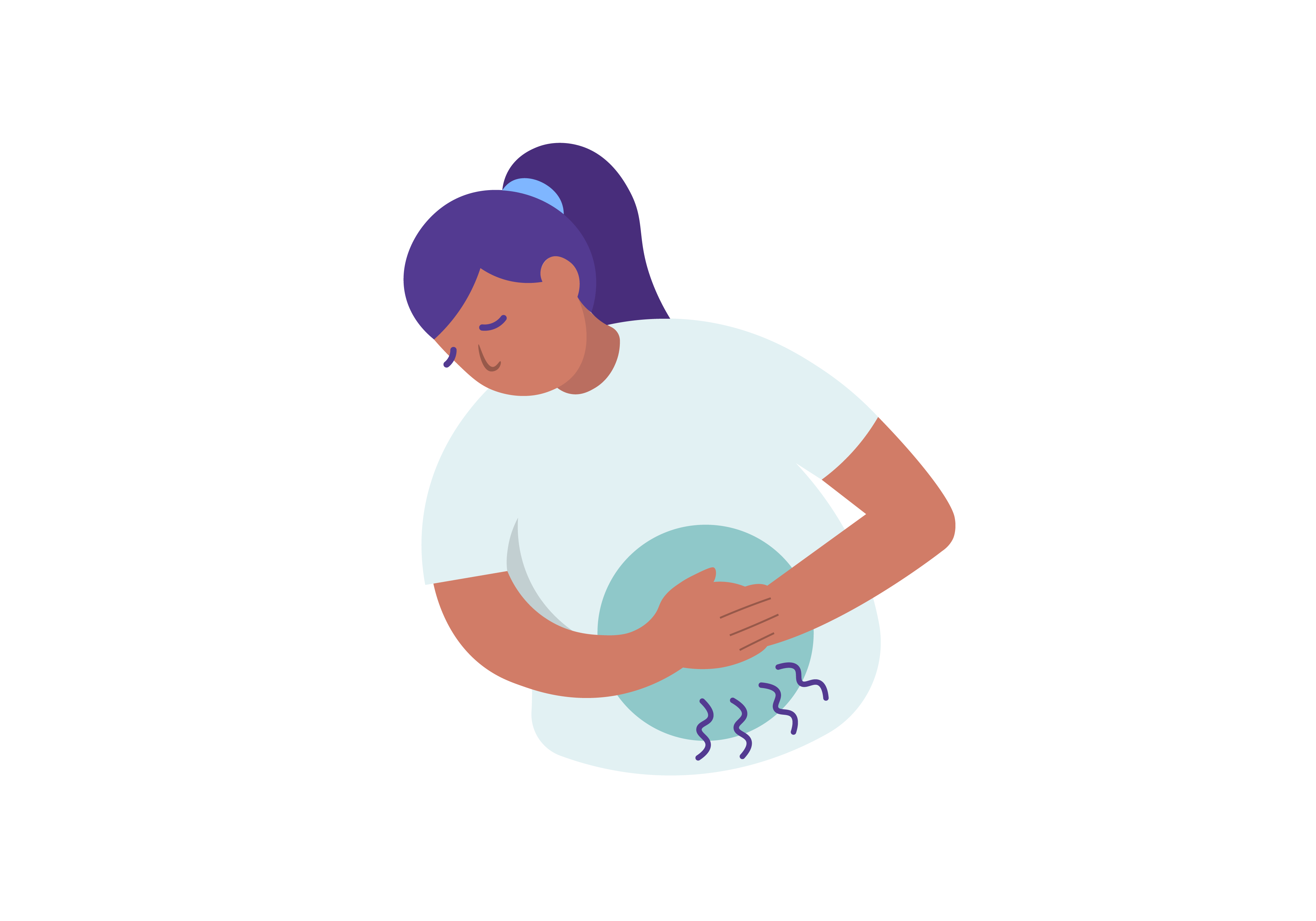 Each option has pros and cons that your provider will discuss with you.
Each option has pros and cons that your provider will discuss with you.
Medications to treat incontinence
There are quite a few medications that can reduce leakage. Some of these drugs stabilize the muscle contractions that cause problems with an overactive bladder. Other medications actually do the opposite thing — relaxing muscles to allow your bladder to empty completely. Hormone replacement therapies can — often involving replacing estrogen that’s decreased during menopause — may also help restore normal bladder function.
In many cases, medications can work very well to return normal function to the bladder. Your provider will carefully select a medication that matches your specific needs. Often, your provider will start you on a low dose of the medication and then increase it slowly. This is done to try and reduce your risks of side effects and to keep track of how well the medication is working to treat your incontinence.
Common medications that can be used to treat incontinence include:
- Oxybutynin (Ditropan®), oxybutynin XL (Ditropan XL®), oxybutynin TDDS (Oxytrol®).

- Tolterodine (Detrol®).
- Solifenacin (Vesicare®).
- Fesoterodine (Toviaz®).
- Darifenacin (Enablex®).
- Trospium (Sanctura XR®).
- Antidepressant medication — Imipramine (Norfranil, Tipramine, Trofranil).
- Mirabegron (Myrbetriq®).
Lifestyle changes to manage incontinence
Sometimes, there are changes to your everyday life that can actually help your incontinence. These changes often include exercises you can do to strengthen your pelvic floor muscles, changes to your normal habits and an improved diet. Some people notice improvements by making these changes at home and don’t need additional treatment.
Talk to your healthcare provider about these home treatment options for incontinence before starting any of them. You might not be able to treat all types of incontinence with these lifestyle changes. Your provider might also make detailed suggestions to you about the best lifestyle changes to try given your incontinence diagnosis.
Lifestyle changes to help improve incontinence can include:
- Emptying your bladder on a regular schedule. This is also called timed voidings — a practice of going to the bathroom on a regular schedule instead of waiting for the urge to go.
- Emptying your bladder before physical activities. If you’re planning to exercise or do a physical activity, plan to empty your bladder before the activity starts to avoid leakage.
- Avoiding lifting heavy objects. If you need to move something large, grab an additional person to help you.
- Doing regular Kegel exercises to help strengthen your pelvic floor muscles.
- Avoiding drinking caffeine or a lot of fluids before staring an activity. If you experience frequent urination and leakage at night, you might also want to avoid drinking beverages right before bed.
- Wearing pads and products that are designed to catch any leaked urine can also be a useful way to manage incontinence. These products can usually be worn under your clothes without anyone noticing and they provide reassurance that you won’t experience urine leaking through your clothes.

- Practicing bladder training to help stretch out the amount of time between each trip to the bathroom. The goal in bladder training is to try and wait a little longer between urinating each time to build up strength.
- Maintaining a healthy body weight. Having excess body weight can be one cause of incontinence. By eating a healthy diet and exercising, you can reduce the risk of incontinence.
There are also devices that you can use at home to help with incontinence. One over-the-counter device that you can use is a:
- Vaginal insert: There are over-the-counter devices that can be placed in the vagina that can compress the urethra and help reduce stress incontinence in women.
Procedures and surgeries to treat incontinence
If other non-invasive treatment options have failed to treat your incontinence, there are several procedures that your provider might suggest. These procedures range from simple injections to more complicated surgeries. Your provider will discuss the best procedural option for you based on the type of incontinence you have and your symptoms.
Your provider will discuss the best procedural option for you based on the type of incontinence you have and your symptoms.
Procedures to treat incontinence can include:
- Bulking agents: This treatment option is an injection that’s typically used in women with stress incontinence. A permanent substance is injected into the lining of your urethra to help increase the size of the urethra’s lining.
- Botulinum toxin injections (Botox®): You might think of Botox® as a cosmetic treatment, but it can also be used to relax muscles in your body. Your provider might inject Botox® into your bladder to help relax the muscles — helping with urge incontinence. This treatment isn’t permanent and will need to be repeated over time.
- Neuromodulation devices: Pacemakers that stimulate the nerves to the bladder to improve control can be implanted. Furthermore, a nerve near your ankle can be stimulated to achieve better bladder control.

- Sling procedures: There are sling procedures to treat incontinence for both men and women. In women, either a synthetic material or strip of your own tissue is typically used to support the urethral channel.
- Artificial urethral sphincter: This is a device that’s used in men with stress incontinence that is placed to close the urethra when not urinating. It’s typically used for leakage after prostate cancer surgery.
How do I do Kegel exercises?
Kegel exercises are a simple way to build strength in your pelvic floor muscles. These exercises are done by lifting, holding and then relaxing your pelvic floor muscles. You can find these muscles by stopping the flow of urine mid-stream while you’re urinating. Only do this until you learn how to find the muscles — stopping the flow of urine mid-stream isn’t healthy over a long period of time.
When you’re doing Kegel exercises, start small. Only hold it for a few second.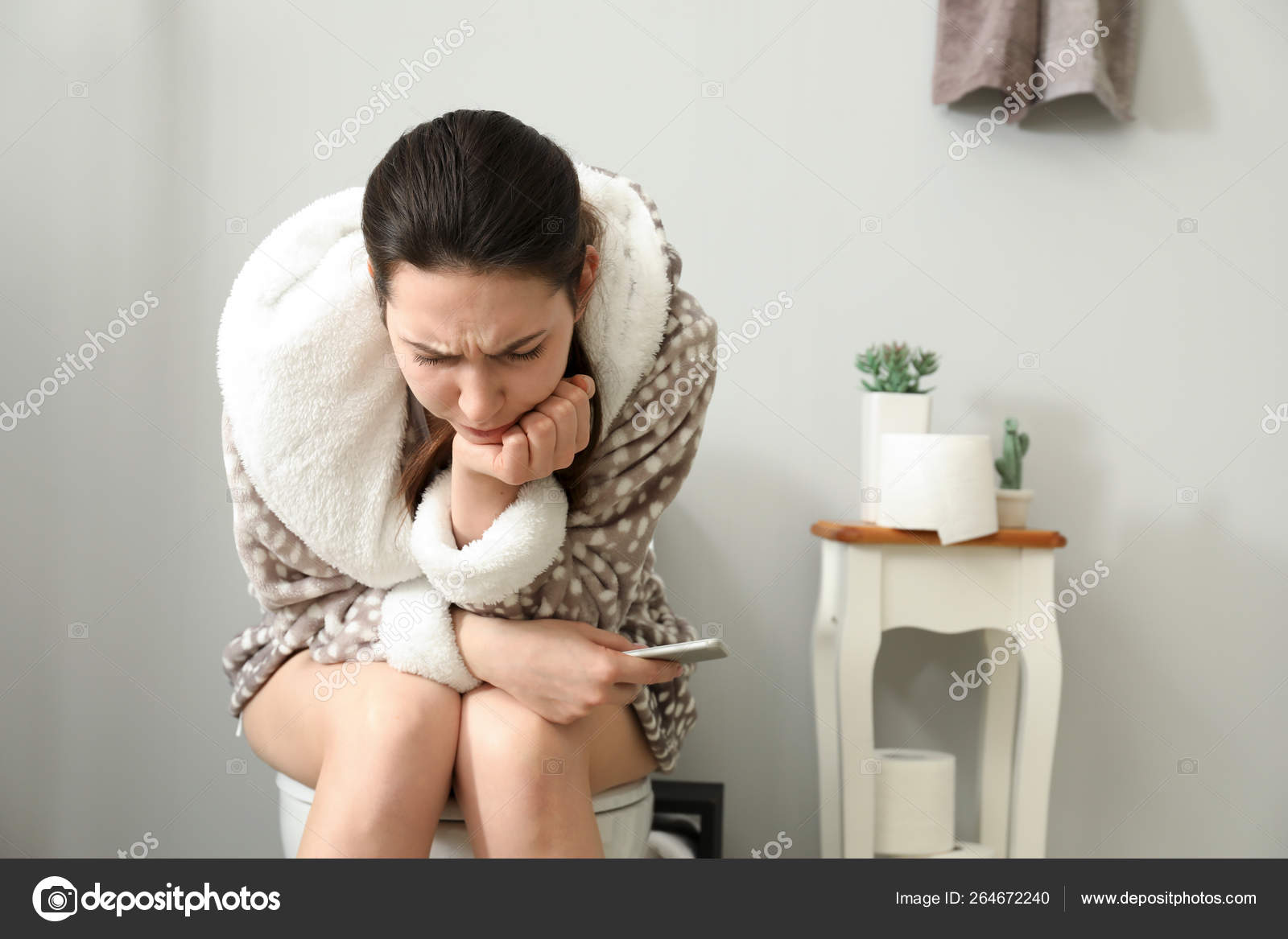 Over time you can slowly work your way up to longer and longer stretches of holding the muscles tight.
Over time you can slowly work your way up to longer and longer stretches of holding the muscles tight.
Unlike other types of workouts, no one can tell when you’re doing Kegel exercises. Aim to do several sets of Kegel exercises (a set is made up of 10 exercises) twice a day.
Prevention
Can incontinence be prevented?
Different events throughout your life can lead to many of the things that cause incontinence. The muscles that support your pelvic organs can weaken over time. For women, these muscles can also be weakened by big life events like pregnancy and childbirth. However, in the same way you work out to build strength in your legs or arms, you can do exercises to strengthen your pelvic floor muscles. Doing exercises to strengthen your pelvic muscles may not prevent you from having any issues with incontinence, but it can help you regain control of your bladder. Maintaining a healthy body weight can also help with bladder control. Talk to your healthcare provider about the best ways to maintain strong pelvic floor muscles throughout your life.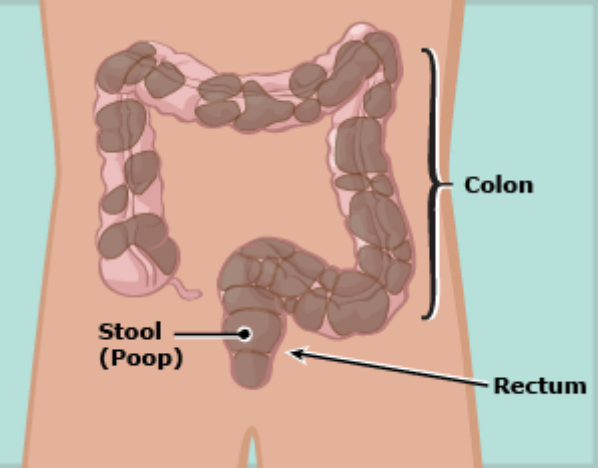
Outlook / Prognosis
Will I have incontinence for my entire life?
Sometimes incontinence is a short-term issue that will go away once the cause ends. This is often the case when you have a condition like a urinary tract infection (UTI). Once treated, frequent urination and leakage problems caused by a UTI typically end. This is also true for some women who experience bladder control issues during pregnancy. For many, the issues end in the weeks after delivery. However, other causes of incontinence are long-term and related to conditions that are managed throughout your life. If you have a chronic condition like diabetes or multiple sclerosis, you may have incontinence for a long period of time. In those cases, it’s important to talk to your provider about the best ways to manage your incontinence so that it doesn’t interfere with your life.
A note from Cleveland Clinic
It can be embarrassing to talk about bathroom habits with your healthcare provider. This embarrassment shouldn’t stop you from treating incontinence, though. Often, your healthcare provider can help figure out the cause of your bladder control issue and help make it better. You don’t need to deal with it alone. Talk to your healthcare provider about the best ways to treat incontinence so that you can lead a full and active life without worrying about leakage.
This embarrassment shouldn’t stop you from treating incontinence, though. Often, your healthcare provider can help figure out the cause of your bladder control issue and help make it better. You don’t need to deal with it alone. Talk to your healthcare provider about the best ways to treat incontinence so that you can lead a full and active life without worrying about leakage.
Lubiprostone oral capsule
What is this medicine?
LUBIPROSTONE (loo bi PROS tone) is a laxative. It is used to treat chronic constipation and constipation caused by opioids (certain prescription pain medicines). It is also used to treat adult women with irritable bowel syndrome who have constipation.
This medicine may be used for other purposes; ask your health care provider or pharmacist if you have questions.
COMMON BRAND NAME(S): Amitiza
What should I tell my health care provider before I take this medicine?
They need to know if you have any of these conditions:
- cancer or tumor in abdomen, intestine, or stomach
- history of bowel obstruction or adhesions
- history of stool (fecal) impaction
- liver disease
- an unusual or allergic reaction to lubiprostone, other medicines, foods, dyes, or preservatives
- pregnant or trying to get pregnant
- breast-feeding
How should I use this medicine?
Take this medicine by mouth with a glass of water. Follow the directions on the prescription label. Do not cut, crush or chew this medicine. Take this medicine with food. Take your medicine at regular intervals. Do not take your medicine more often than directed. Do not stop taking except on your doctor’s advice.
Talk to your pediatrician regarding the use of this medicine in children. Special care may be needed.
Overdosage: If you think you have taken too much of this medicine contact a poison control center or emergency room at once.
NOTE: This medicine is only for you. Do not share this medicine with others.
What if I miss a dose?
If you miss a dose, take it as soon as you can. If it is almost time for your next dose, take only that dose. Do not take double or extra doses.
What may interact with this medicine?
- medicines that treat diarrhea
- methadone
- other medicines for constipation
This list may not describe all possible interactions. Give your health care provider a list of all the medicines, herbs, non-prescription drugs, or dietary supplements you use. Also tell them if you smoke, drink alcohol, or use illegal drugs. Some items may interact with your medicine.
What should I watch for while using this medicine?
Visit your doctor for regular check ups. Tell your doctor if your symptoms do not get better or if they get worse.
What side effects may I notice from receiving this medicine?
Side effects that you should report to your doctor or health care professional as soon as possible:
- allergic reactions like skin rash, itching or hives, swelling of the face, lips, or tongue
- feeling faint or lightheaded, falls
- new or worsening stomach pain
- severe or prolonged diarrhea
- vomiting
Side effects that usually do not require medical attention (report to your doctor or health care professional if they continue or are bothersome):
- headache
- loose stools
- nausea
This list may not describe all possible side effects. Call your doctor for medical advice about side effects. You may report side effects to FDA at 1-800-FDA-1088.
Where should I keep my medicine?
Keep out of the reach of children.
Store at room temperature between 15 and 30 degrees C (59 and 86 degrees F). Throw away any unused medicine after the expiration date.
NOTE: This sheet is a summary. It may not cover all possible information. If you have questions about this medicine, talk to your doctor, pharmacist, or health care provider.
Fiber for Heart, Cholesterol, and Digestive Health
Fiber is the general name for certain carbohydrates — usually parts of vegetables, plants, and grains — that the body can’t fully digest. While fiber isn’t broken down and absorbed like nutrients, it still plays a key role in good health.
There are two main types of fiber. They are soluble fiber (which dissolves in water) and insoluble fiber (which does not). Combined, they’re called total fiber.
Why do people take fiber?
A number of studies have found that a high intake of total fiber, from foods and supplements, lowers the risk of heart disease. High-fiber diets have also been associated with a reduced risk of type 2 diabetes.
Insoluble fiber adds bulk to stools. It helps treat constipation and diverticular disease and may benefit people with some types of IBS (irritable bowel syndrome). Recent research has shown that increased fiber is also linked to increased survival in people with colon cancer.
Soluble fiber seems to lower cholesterol levels. It binds with cholesterol in the intestines and prevents it from being absorbed. Soluble fiber may also be useful in treating diabetes and insulin resistance (prediabetes). It can slow the absorption of carbohydrates, helping to improve blood sugar levels.
Since fiber is filling and has very few calories, high-fiber foods may also help with weight loss.
How much fiber should you take?
Fiber that comes from whole foods is called dietary fiber. Fiber that’s sold in supplements, or added to fortified foods, is called functional fiber. The Institute of Medicine has set an adequate intake (AI) for total fiber, which includes all sources. Getting this amount of fiber should be enough to stay healthy. Doctors may recommend higher doses of fiber.
Category | Adequate Intake (AI) |
CHILDREN | |
| 1-3 years | 19 g/day |
| 4-8 years | 25 g/day |
FEMALES | |
| 9-18 years | 26 g/day |
| 19-50 years | 25 g/day |
| 51 years and up | 21 g/day |
| Pregnant | 28 g/day |
| Breastfeeding | 29 g/day |
MALES | |
| 9-13 years | 31 g/day |
| 14-50 years | 38 g/day |
| 51 years and up | 30 g/day |
Even in high amounts, fiber appears to be safe. Experts have not discovered an amount of fiber that’s harmful.
Can you get fiber naturally from foods?
Most people in the U.S. take in much less fiber than they should. The best way to get it is from food, like a variety of fruits, vegetables, and grains. Some good sources of soluble fiber include:
- Oatmeal and oat bran
- Apples, citrus fruits, and strawberries
- Beans, peas, and lentils
- Barley
- Rice bran
And some sources of insoluble fiber are:
- Cereal brans
- Whole grains, like barley
- Whole-wheat breads, wheat cereals, and wheat bran
- Vegetables like carrots, cabbage, beets, and cauliflower
Some foods, like nuts, contain both soluble and insoluble fiber.
What are the risks of taking fiber?
- Side effects. Fiber does not have serious side effects. At high levels, it can cause bloating, cramping, gas, and perhaps worsening constipation. Drinking more water — 2 liters a day — may help.
- Interactions. If you take any regular medications, talk to a doctor before you start using a fiber supplement. It may block the absorption of some drugs.
- Risks. Rarely, fiber supplements have caused intestinal blockages. If you have any chronic disease, talk to a doctor before you start using a fiber supplement. The sugar and salt in some supplements, particularly powders, might be risky for people with diabetes or high blood pressure. People with diabetes may want to choose a sugar-free powder or another form of fiber. Blond psyllium is the most common type of fiber supplement on the market.
Constipation | Johns Hopkins Medicine
What is constipation?
Constipation is a condition in which a person has uncomfortable or infrequent bowel movements. Generally, a person is considered to be constipated when bowel movements result in passage of small amounts of hard, dry stool, usually fewer than three times a week. However, normal stool elimination may consist of having a bowel movement three times a day or three times a week; it depends on the person.
About 4 million people in the United States have frequent constipation. Constipation is the most common gastrointestinal complaint, resulting in 2.5 million doctor visits annually.
What causes constipation?
Hard, dry stools are the result of the colon absorbing too much water. Normally, as food moves through the colon (also known as the large intestine) the colon absorbs water while forming stool (waste products). Muscle contractions then push the stool toward the rectum, and, by the time the stool reaches the rectum, most of the water has been absorbed, making the stool solid.
When the colon’s muscle contractions are slow or sluggish, the stool moves through the colon too slowly, resulting in too much water being absorbed. Some of the most common causes of constipation include the following:
Medications
Lack of exercise
Not enough liquids
Not enough fiber in the diet
Irritable bowel syndrome
Ignoring the urge to have a bowel movement
Changes in habits or lifestyle, such as travel, pregnancy, and old age
Problems with intestinal function
Abuse of laxatives
What are the symptoms of constipation?
The following are the most common symptoms of constipation. However, each individual may experience symptoms differently. Symptoms may include:
Difficult and painful bowel movements
Bowel movements fewer than three times a week
Feeling bloated or uncomfortable
Feeling sluggish
Abdominal pain
The symptoms of constipation may resemble other medical conditions or problems. Always consult your doctor for a diagnosis.
How is constipation diagnosed?
The tests performed by a doctor will depend on the duration and severity of the constipation, since most persons experience constipation at one time or another. The doctor will also take into account the patient’s age, and whether there is blood in the stool, recent changes in bowel habits, or weight loss.
Diagnosing constipation may include:
Medical history. The doctor will ask for a description of the constipation, including duration of symptoms, frequency of bowel movements, and other information to help determine the cause of the constipation.
Physical examination. A physical examination may also include a digital rectal examination (DRE), in which the doctor inserts a gloved, lubricated finger into the rectum to evaluate the tone of the muscle that closes off the anus. This examination also helps detect tenderness, obstruction, blood, amount and caliber of stool, and if enlargement of the rectum is present.
Other diagnostic tests may include:
Abdominal X-ray
Lower GI (gastrointestinal) series (also called barium enema). A lower GI series is a procedure that examines the rectum, the large intestine, and the lower part of the small intestine. A fluid called barium (a metallic, chemical, chalky, liquid used to coat the inside of organs so that they will show up on an X-ray) is given into the rectum as an enema. An X-ray of the abdomen shows strictures (narrowed areas), obstructions (blockages), and other problems.
Colonoscopy. Colonoscopy is a procedure that allows the doctor to view the entire length of the large intestine, and can often help identify abnormal growths, inflamed tissue, ulcers, and bleeding. It involves inserting a colonoscope, a long, flexible, lighted tube, in through the rectum up into the colon. The colonoscope allows the doctor to see the lining of the colon, remove tissue for further examination, and possibly treat some problems that are discovered.
Sigmoidoscopy. A sigmoidoscopy is a diagnostic procedure that allows the doctor to examine the inside of a portion of the large intestine, and is helpful in identifying the causes of diarrhea, abdominal pain, constipation, abnormal growths, and bleeding. A short, flexible, lighted tube, called a sigmoidoscope, is inserted into the intestine through the rectum. The scope blows air into the intestine to inflate it and make viewing the inside easier.
Colorectal transit study. This test shows how well food moves through the colon. The patient swallows capsules containing small markers which are visible on X-ray. The patient follows a high-fiber diet during the course of the test, and the movement of the markers through the colon is monitored with abdominal X-rays taken several times three to seven days after the capsule is swallowed.
Anorectal function tests. These tests diagnose constipation caused by an abnormal functioning of the anus or rectum.
Treatment for constipation
Specific treatment for constipation will be determined by your doctor based on:
Your age, overall health, and medical history
Extent of the condition
Your tolerance for specific medications, procedures, or therapies
Expectations for the course of this condition
Your opinion or preference
Most often, constipation can be treated through dietary and lifestyle changes, which relieve symptoms and help prevent the condition. Treatment may include:
Diet modifications. A diet with 20 to 35 grams of fiber daily helps in the formation of soft, bulky stool. While adding foods such as beans, whole grains, bran cereals, fresh fruits and vegetables is helpful in adding fiber to the diet. Limiting foods such as ice cream, cheeses, meats, and processed foods, which contain little or no fiber can also be helpful.
Laxatives. Laxatives may be prescribed after diet and lifestyle changes have failed to be effective.
Eliminating or changing medication
Biofeedback. Biofeedback is used to treat chronic constipation caused by anorectal dysfunction. This treatment retrains the muscles that control release of bowel movements.
Lifestyle changes, such as increased water and juice intake, regular exercise, and allowing enough time for daily bowel movements can be helpful.
What are good fiber sources?
| Foods | Moderate fiber | High fiber |
|---|---|---|
| Bread | Whole wheat bread, granola bread, wheat bran muffins, Nutri-Grain waffles, popcorn | |
| Cereal | Bran Flakes, Raisin Bran, Shredded Wheat, Frosted Mini Wheats, oatmeal, Muslix, granola, oat bran | All-Bran, Bran Buds, Corn Bran, Fiber One, 100% Bran |
| Vegetables | Beets, broccoli, brussel sprouts, cabbage, carrots, corn, green beans, green peas, acorn and butternut squash, spinach, potato with skin, avocado | |
| Fruits | Apples with peel, dates, papayas, mangos, nectarines, oranges, pears, kiwis, strawberries, applesauce, raspberries, blackberries, raisins | Cooked prunes, dried figs |
| Meat substitutes | Peanut butter , nuts | Baked beans, black-eyed peas, garbanzo beans, lima beans, pinto beans, kidney beans, chili with beans, trail mix |
What are complications of constipation?
Constipation can cause complications, such as hemorrhoids, which occur by straining to have a bowel movement, or anal fissures (tears in the skin around the anus) which occur when hard stool stretches the sphincter muscle. This can result in rectal bleeding.
Sometimes, straining also causes rectal prolapse, where a small amount of intestinal lining pushes out from the anal opening. Constipation may also cause fecal impaction, which occurs mostly in children and older adults. The hard stool packs the intestine and rectum so tightly that the normal pushing action of the colon is not enough to expel the stool.
Constipation – NHS
Constipation is common and it affects people of all ages. You can usually treat it at home with simple changes to your diet and lifestyle.
This page is about constipation in adults. There’s separate information on constipation in babies and children.
Check if it’s constipation
It’s likely to be constipation if:
- you have not had a poo at least 3 times during the last week
- the poo is often large and dry, hard or lumpy
- you are straining or in pain when you have a poo
You may also have a stomach ache and feel bloated or sick.
If you’re caring for someone with dementia, constipation may be easily missed. It’s important to be aware of any changes in their behaviour that might mean they are in pain or discomfort, although it’s not always easy.
Read more about dementia behaviour changes
What causes constipation
Constipation in adults has many possible causes. Sometimes there’s no obvious reason.
The most common causes include:
- not eating enough fibre – such as fruit, vegetables and cereals
- not drinking enough fluids
- not moving enough and spending long periods sitting or lying in bed
- being less active and not exercising
- often ignoring the urge to go to the toilet
- changing your diet or daily routine
- a side effect of medicine
- stress, anxiety or depression
Constipation is also common during pregnancy and for 6 weeks after giving birth.
Rarely, constipation may be caused by a medical condition.
How you can treat and prevent constipation yourself
Making simple changes to your diet and lifestyle can help treat constipation.
It’s safe to try these simple measures when you’re pregnant.
You may notice a difference within a few days. Sometimes it takes a few weeks before your symptoms improve.
Make changes to your diet
To make your poo softer and easier to pass:
Improving your toilet routine
Keep to a regular time and place and give yourself plenty of time to use the toilet.
Do not delay if you feel the urge to poo.
To make it easier to poo, try resting your feet on a low stool while going to the toilet. If possible, raise your knees above your hips.
Consider increasing your activity
A daily walk or run can help you poo more regularly.
Video: how to treat constipation
This video shows you how to treat constipation.
Media last reviewed: 1 July 2020
Media review due: 1 July 2023
A pharmacist can help with constipation
Speak to a pharmacist if diet and lifestyle changes are not helping.
They can suggest a suitable laxative. These are medicines that help you poo more regularly.
Most laxatives work within 3 days. They should only be used for a short time.
Non-urgent advice: See a GP if you:
- are not improving with treatment
- are regularly constipated and it lasts a long time
- are bloated and it lasts a long time
- have blood in your poo
- have unexpectedly lost weight
- feel very tired all the time
- are taking medicine that’s causing constipation – such as opioid painkillers
Speak to the GP before you stop taking any prescribed medicine.
Information:
Coronavirus (COVID-19) update: how to contact a GP
It’s still important to get help from a GP if you need it. To contact your GP surgery:
- visit their website
- use the NHS App
- call them
Find out about using the NHS during COVID-19
Complications of long-term constipation
Long-term constipation can lead to faecal impaction. This is where poo has built up in the last part of the large intestine (rectum).
The main symptom is diarrhoea after a long bout of constipation.
Faecal impaction may be treated with:
- stronger laxatives – prescribed by a GP
- a suppository – medicine you place in your bottom
- a mini enema – where fluid is passed through your bottom, into your bowel
- a healthcare professional removing some of the poo – this is not something you should do yourself
Community content from HealthUnlocked
Page last reviewed: 03 September 2020
Next review due: 03 September 2023
90,000 treatment and diagnosis of symptoms, causes in Moscow
B.N. Soldatov
3 August 2021
A surgeon from God, an excellent doctor, a good psychologist. When I received a referral to the Federal Research Center of the Federal Medical and Biological Agency of Russia, I asked to see another surgeon who performed operations with friends, to which I was told that Maksim Sergeevich, although young, is a very competent specialist and you will not regret it. I would like to admit…
More details
Astakhov Maxim Valerievich
16 July 2021
Turned to Doctor Zinovsky Mikhail Vyacheslavovich. At the first appointment, Mikhail Vyacheslavovich kindly greeted him, inquired about everything in detail, conducted an examination and clearly explained the need for the operation. Operation was successfully completed.After the operation, he regularly visited me in the ward, and …
More details
Protsenko Evgeniy Yurievich
9 July 2021
Turned to Doctor Zinovsky Mikhail Vyacheslavovich during an exacerbation of the disease. Conservative treatment did not help. Constant pain, excruciating trips to the toilet, sleepless nights…
At the first reception, Mikhail Vyacheslavovich kindly greeted me, reassured me, in detail about …
More details
Zhankulova Nurgul
9 May 2021
Many thanks to the wonderful doctor Harutyun Radionovich for a good and attentive attitude towards his patients.
More details
Tikhomirov Kh.A.
5 May 2021
I sincerely thank and pay tribute to the high professionalism and outstanding human qualities of the surgeon Maxim Sergeevich Loschenov for the operation he performed Open hemorrhoidectomy and postoperative treatment. The problem with which I turned to Dr. Loschenov existed…
More details
Romasenko R.A
17 March 2021
I would like to say a big thank you to Maxim Sergeevich for the help, I was struggling with my problem for a long time, in 2018 I turned to the EuroMed clinic, where I underwent an operation that was completely unsuitable for me (supposedly sparing, with almost a week recovery period…
More details
Burlakov Alexander Nikolaevich
7 March 2021
I would like to express my sincere gratitude to the surgeon oncologist-coloproctologist of the Federal Research Center for Clinical and Biological Research of the FMBA Zinovsky Mikhail Vyacheslavovich for his high professionalism and humanly warm and attentive attitude towards his patients.Thanks to a correct diagnosis in my confusing medical history …
More details
90,000 causes, symptoms, what to do
Incorrect power supply
Sometimes men, to a lesser extent than women, tend to think about the usefulness of food and devote time to preparing homemade food on their own. Often, a full meal is replaced by snacks on the go with fast food, semi-finished products or processed foods (sausages, smoked meats, chips).Such food contains little vegetable fiber, which helps to improve the consistency of the stool, as well as to increase its volume, which leads to mechanical irritation of the receptors in the intestinal walls. As a result, due to unbalanced nutrition and the formation of a small stool volume, constipation may develop 1.5 .
Alcohol
Alcohol can also cause constipation 7 . It affects the motility of the gastrointestinal tract, food absorption and the permeability of the intestinal mucosa 8 .
Taking certain medications
Taking certain medications can be a constipation-causing factor. These drugs include antipsychotics, antihypertensives, anticonvulsants, some pain relievers and anti-inflammatory drugs 5 . As a rule, after the abolition of the causative drugs, the process of normal bowel movement is restored on its own. But what if the patient is forced to take medication for a long time? In this case, you can, after consulting your doctor, think in advance about preventive measures to help prevent constipation.
Disorders of the gastrointestinal tract and other diseases
Constipation can often be the result of another disease associated with the functioning of the intestines and other internal organs. Allocate endocrine constipation, observed in patients with diabetes mellitus and some diseases of the thyroid gland. When constipation is caused by a problem with the intestines, it can be caused by a violation of intestinal motility or blood flow in the small pelvis, or some kind of mechanical obstruction that impedes the passage of feces 1 .
A mechanical obstruction can be a tumor, polyp, protrusion of the intestinal wall, narrowing of the lumen, chronic volvulus 10 . Also, stool retention can develop as a result of direct damage to the rectum: cracks in the anus, hemorrhoids.
90,000 Causes of constipation in women: causes, treatment, diet
Views: 247 014
Last update date: 08/25/2021
Average Read Time: 6 minutes
Content:
Causes of constipation in women
Constipation (constipation) is one of the most unpleasant problems that almost every woman has encountered at least once in her life.The reason for the appearance of problems with stool can be both hormonal changes caused by pregnancy or the phase of the menstrual cycle, as well as various injuries and diseases. To effectively treat constipation in women, the first step is to identify the source of the problem. If the act of defecation occurs less than 3 times a week, and the process of emptying the intestines is accompanied by straining each time, we can talk about stool disorders. Next, we will look at some of the most common causes of constipation in women and their treatment.
Up to table of contents
Constipation in young women (20, 30 years)
Menstrual cycle and constipation . Before menstruation, many women notice changes in the body. In addition to engorgement of the mammary glands and changes in eating habits, problems with bowel movements may appear. The cause of constipation in women during this period is a change in hormonal levels, namely an increase in progesterone. It dominates in the second phase of the cycle, reaching a maximum before menstruation.With the onset of menstruation, all unpleasant sensations disappear due to a decrease in progesterone levels and an increase in another hormone – estrogen.
Pregnancy. An interesting position is another explanation of why women have constipation. Again, the culprit is progesterone and its increase. In addition, with the growth of the fetus, the uterus also enlarges, which gradually begins to squeeze the intestines in the pelvic area. This makes his motility less active, leading to problems with stool.Constipation during pregnancy is dangerous by the development of hemorrhoids and anal fissures, so you should not leave it unattended.
Natural childbirth. This is another answer to the question why women have constipation. Stool problems in the first week after childbirth are often associated with pain due to the resulting tears. When breastfeeding under the influence of oxytocin, the stool usually returns to normal.
Wrong diet. The diet of an adult is also important for maintaining normal bowel function.You should not often eat fatty, spicy and fried foods, as well as baked goods, strong tea and coffee, chocolate, smoked foods and alcoholic beverages.
Sedentary lifestyle. Constipation can also occur due to lack of sufficient physical activity. This is due to sluggish bowel movements, which can be enhanced by various ab exercises, as well as abdominal massage.
Up to table of contents
Constipation in women in adulthood after 40-50 years
To the above reasons for acute and chronic constipation in elderly women are added the features of hormonal changes, a deterioration in the sensitivity of rectal receptors, as well as diseases that negatively affect intestinal motility, due to which drugs have to be taken.
Insufficient ovarian function. Another reason for frequent constipation in women after the age of 50 may be the extinction of ovarian function. As their activity decreases, periods of increase in estrogen disappear, which contributed to the activation of the intestines. With the approach of menopause, the indicator of this hormone falls altogether, and after this there is a restructuring in the level of thyroid hormones. Hypofunction of this organ (hypothyroidism) is often accompanied by problems with stool.
Genital prolapse. This term refers to prolapse of the uterus, vagina, bladder and rectum. This violation can also provoke constipation, but in most cases women do not even know that genital prolapse is the source of problems with stool.
Up to table of contents
Why constipation is dangerous for a woman
Stool problems do not just cause unpleasant, and sometimes even painful sensations. Constipation can cause the development of such dangerous consequences as intestinal obstruction, colon diverticulosis, rectal prolapse, hemorrhoidal bleeding, etc.In addition, problems with bowel movements sometimes indicate serious endocrine disorders and even cancer (such as colon cancer). A timely visit to a doctor will allow you to determine the cause of the ailments in time and prescribe treatment.
Up to table of contents
Treatment of constipation
Of course, if constipation is caused by any disease, it is necessary first of all to deal with it, while trying to alleviate the symptoms of stool retention.
Diet for constipation in women
Diet plays an important role in women with constipation.This is one of the easiest ways to deal with bowel problems. Try to exclude the foods listed above from your daily menu. The diet for constipation in women should include fruits, vegetables, dairy products, lean meat and fish, hated soups, dried fruits (especially dried apricots, raisins, prunes), etc. In addition, drink enough water, walk more in the fresh air or charge at least 30 minutes daily.
Laxatives
You can use special laxatives to relieve pain and speed up the bowel movement.One of the most popular remedies for constipation among women is the MICROLAX ® micro enema. It is important that it can be used during pregnancy and while breastfeeding, because it only has a local effect. Already after 5-15 minutes * you may feel relief. Before use, read the instructions and consult your doctor.
Up to table of contents
The information in this article is for reference only and does not replace the professional advice of a physician.Consult a qualified professional for diagnosis and treatment.
* Approximate time of onset of action according to the instructions for use.
90,000 Chronic Constipation: Symptoms, Signs, Causes and Treatment of Persistent Constipation | What to do and how to treat chronic constipation in adults
Views: 336 697
Date of last update: 25.08.2021
Average Read Time: 16 minutes
Content:
Probably, most of us during our life at least once encounter constipation caused by inaccuracies in nutrition and malfunction of the intestines. However, for some, long “sit-downs” in the toilet are becoming commonplace. Presumably, up to 50% of Russians of all ages suffer from chronic constipation: from babies to the elderly 1 . We will tell you about the causes of stool disorders and how to normalize it in this article.
Symptoms and signs
Chronic constipation (constipation) is understood as constantly delayed, difficult and systematically insufficient emptying of the intestines, accompanied by abdominal discomfort and general disturbance 1.2 .
Signs of constipation:
- stool retention for more than 48 hours;
- decrease in stool volume up to 35 g per day;
- dense, dry, fragmented stool that injures the anus;
- sensation of incomplete emptying or “blockage” of the rectum;
- the need for prolonged attempts, taking more than a quarter of the time from the moment of the onset of the urge to defecate to the release of feces.
The presence of two of the six listed signs indicates a stool retention 1 . Chronic constipation is said if difficulties arise with every fourth visit to the toilet for a total of more than 3 months within six months 2 .
Many believe that stool should be daily, and its absence is regarded as a problem. However, some people, due to the characteristics of the body, go to the toilet “in a big way” every 2 days and do not experience any inconvenience 1 .
Constipation always causes discomfort. Symptoms that may accompany frequent constipation 1 ::
- Abdominal distension and heaviness;
- nausea and belching;
- dullness, pallor and tan skin tone;
- reduced skin turgor (flabbiness);
- the appearance of dermatological diseases: eczema, pyoderma, urticaria, acne.
Up to table of contents
Causes of chronic constipation
Systematically obstructed defecation can be caused by a variety of reasons that disrupt the normal functioning of the intestines and the process of excretion of feces 1 .
- Peristalsis plays a major role in normal bowel function. To activate it, it is necessary that the intestinal contents be sufficient in volume 1 : a decrease in the amount of feces leads to a slowdown in motility and constipation.
- Compaction of feces associated with insufficient intake of water into the body and its active absorption in the intestine.
- Difficulty moving feces through the intestine can also be associated with:
- damage to her muscular apparatus;
- problems of the nervous system involved in the formation of peristaltic waves;
- disruptions in the endocrine regulation of the gastrointestinal tract;
- “damage” to the reflex to defecate, which occurs when the rectum is filled;
- mismatch in the work of the pelvic floor muscles, in particular the sphincters of the anus, which regulate the excretion of feces 1 .
The above-described disorders occur with various types of chronic constipation.
Depending on the cause, constipation is 1 :
- Alimentary (simple) associated with nutritional errors, non-compliance with the water regime and a sedentary lifestyle.
- Habitual, arising from the bad habit of delaying bowel movements or the inability to go to the toilet when the urge occurs.
- Metabolic and endocrine , which occur against the background of hypothyroidism, diabetes mellitus, pregnancy, pheochromocytoma, as well as disorders of potassium and calcium metabolism and are accompanied by a decrease in the level of these trace elements in the blood.
- Medication , developing as a side effect of drugs, for example, antispasmodic, anticonvulsant, antihistamines, non-steroidal anti-inflammatory drugs, antidepressants.
- Neurogenic, caused by diseases of the central and peripheral nervous system: multiple sclerosis, impaired cerebral circulation, Parkinson’s and Alzheimer’s disease, spinal lesions.
- Psychogenic due to chronic stress, hypochondria and depression, schizophrenia, anorexia nervosa.
- Associated with systemic diseases (scleroderma), diseases of internal organs (cholecystitis, pancreatitis), “congestive” phenomena in heart, renal and hepatic insufficiency.
- Provoked by diseases of the colon : inflammatory, non-inflammatory, tumor, including oncological.
- Caused by problems of the rectum and the pelvic floor: tumors, weakening of the pelvic floor muscles, prolapse of the pelvic organs, etc.d. 1.4
Up to table of contents
Most common constipation
Most often there are alimentary simple and habitual variants of constipation, as well as irritable bowel syndrome (IBS) occurring in the form of constipation, the development of which is explained, first of all, by psychological reasons 1.2 .
Alimentary
This type of constipation is associated with a delayed movement of food through the gastrointestinal tract as a result of a number of factors.These include:
- A sharp decrease in the amount of food consumed while following a diet, lack of appetite, the presence of contraindications and obstacles to adequate nutrition, for example, after surgery, in the absence of teeth 1 .
- Insufficient fluid intake, which causes dehydration and a decrease in the volume of intestinal contents 1 .
- Excessive enthusiasm for foods that “fix” the stool 3 due to the crushed composition, low fiber content, astringent and diuretic substances.This group includes strong broths, mashed soups and cereals, “spreads”, jelly, puddings, compotes from pears, blueberries, quince, strong tea and coffee 3 .
An inactive lifestyle also contributes to the development of alimentary constipation 1 . Difficulty defecating occurs due to decreased motility and is not accompanied by structural changes in the intestine, characteristic of diseases. Normalization of nutrition and increased physical activity, as a rule, contributes to normalization of stool 1.2 .
Habitual
Persistent constipation in adults and children is often the result of the habit of restraining bowel movements.
The best time to go to the toilet “in a big way” is the morning 1.3 . The beginning of physical activity and eating during breakfast reflexively increase intestinal motility and facilitate its emptying. If in the morning rush to postpone going to the toilet over and over again, the feces stretch the rectum, and its receptors stop responding to irritation – the reflex to defecate becomes weak.As a result, the habitual constipation arises.
People who deliberately delay going to the toilet when the urge occurs are faced with habitual persistent constipation. This happens when a person is demanding on the sanitary conditions of public places and cannot use the toilet while at work or school 1 .
Often, problems with the excretion of feces occur in people who are not able to immediately satisfy a natural need, for example, among drivers of public transport, teachers, conveyor workers, judges, surgeons 1 .
Often the cause of unconscious delay in bowel movement is fear of defecation due to regular pain syndrome in the presence of hemorrhoids, chronic anal fissure, inflammatory diseases and rectal cancer 1 . Treating these conditions can help solve the problem of constipation.
Psychogenic
One of the variants of this group of disorders is irritable bowel syndrome (IBS) 1 .It is believed that the basis for the development of the disease is problems in the psychoemotional sphere 1 . The imbalance of hormones arising against the background of nervous overload and chronic stress leads to changes in intestinal motility, and nutritional problems and a sedentary lifestyle exacerbate the situation 1 . A distinctive feature of constipation in IBS is the appearance of abdominal pain, which disappears immediately after stool discharge; a combination of stool disorders with migraines, insomnia at night and drowsiness during the day, sudden hot flashes and rapid heartbeat, painful menstruation and other symptoms arising from malfunctions of the nervous system.These manifestations also make it possible to distinguish IBS from habitual constipation 1 .
Up to table of contents
Chronic constipation in children
Chronic stool retention affects not only adults, but also children. True, the concept of normal bowel movements in this case is unclear. In newborns and infants of the first months of life, feces can be excreted after each feeding, that is, up to seven times a day, and with artificial feeding – once a day 3 . The absence of a chair for 36 hours can already be considered a constipation 3 .For children over 3 years old, this period is 48 hours 3 .
Constipation in children in most cases is limited to functional disorders 3 . Currently, the main reason for irregular emptying of the rectum in children of the first year of life is the immaturity of the digestive and nervous system of the child 4 . The difficult course of pregnancy in the mother, premature birth, cesarean section – all this sometimes leads to delays in the development of the baby 3 .
Alimentary causes of constipation include refusal to breastfeed, the wrong choice of formula for artificial nutrition and complementary feeding, insufficient fluid intake 3 .
In older children, habitual constipation is especially common associated with ignoring breakfast, suppression of the natural morning urge due to haste, deliberate stool retention caused by shyness and refusal to visit a public toilet in kindergarten and school 3 .
“Children’s” constipation is mainly accompanied by increased peristalsis and discoordination of the intestinal motor activity, leading to spasms, therefore, treatment should be aimed at relaxing the intestinal muscles 3 .
In case of persistent problems with emptying the rectum in children, in addition to recommendations for changing the diet, doctors prescribe antispasmodic drugs and procedures, as well as drugs that normalize the functioning of the nervous system and prebiotics 3 .At the same time, laxatives that stimulate intestinal motility and inhibit the absorption of water and salts in the gastrointestinal tract are not used 3 .
Up to table of contents
Chronic constipation in the elderly
The elderly, like children, are a special category of patients who turn to gastroenterologists with chronic constipation. According to statistics, in elderly people, stool retention occurs 5 times more often than in young people 4 , and they are mainly associated with a decreased intestinal tone and a slowdown in peristalsis 4 .
The following factors predispose to regular stool problems 4 :
- Nutritional features, in particular a decrease in the volume of food and the rare use of coarse foods – due to problems with the teeth and stomach, crushed refined foods, poor in fiber, begin to prevail in the diet.
- Decrease in physical activity due to muscle weakness, diseases of the musculoskeletal system and cardiovascular system.
- Weakening of the muscles of the anterior abdominal wall and pelvic floor due to a general age-related decrease in muscle volume and loss of muscle tone 4 .
- Age-related decrease in intestinal motility.
- Slowdown of digestion due to a decrease in the activity of digestive enzymes and a change in the composition of the intestinal microflora 4 .
- Taking a lot of drugs, some of which cause problems with stool 4 .
- Abuse of addictive laxatives 4 .
The danger of chronic constipation in elderly patients is the high risk of fecal stones. Long-term presence of feces in the intestine and their pressure on the intestinal wall can cause the formation of fecal ulcers and the development of cancer 4 . According to statistics, the risk of colorectal cancer in the presence of constipation is 1.48-2 times higher than in persons without constipation 4 .
In old age, the so-called “alarming symptoms” require special attention:
- changes in the thickness and shape of feces,
- Progression of stool problems
- onset of diarrhea after prolonged stool retention,
- the presence of blood in the feces,
- pallor of skin due to anemia,
- General weakness and weight loss.
The appearance of the above symptoms at the age of over 50 is a reason for immediate medical attention.
Up to table of contents
What to do with persistent constipation
First of all, you need to contact a gastroenterologist and undergo an examination, which will allow you to establish the causes of violations. Taking into account the results, the doctor will prescribe treatment, which in any case will include the following activities.
1. Power supply correction.
With constipation, accompanied by a weakening of intestinal motility, it is useful to include in the diet foods rich in coarse fiber: raw vegetables and fruits (at least 200 g per day), crumbly cereals (oatmeal, buckwheat, pearl barley, millet, bulgur and others) and whole grain bread, flaxseed and bran, prunes and dried apricots, fermented milk products, vegetable fats and meat containing ligaments and tendons 1.3.4 .
If constipation is accompanied by a decrease in intestinal peristalsis, doctors advise carefully, within 5-7 days, to increase the fiber content in the diet 1 .
For the prevention of dehydration and compaction of feces, it is recommended to consume at least 1.5-2 liters of fluid per day 1.4 .
It is important to follow the diet: be sure to have a hearty breakfast and eat at least 3-4 times a day 3 .
2. Increased physical activity
In order to stimulate the work of the intestines, therapeutic exercises, yoga, swimming, long walks, physical education are shown.
Abdominal massage 2 and special exercises for the abdominal muscles 3 , implying their alternate tension and relaxation, will help to mechanically enhance motor skills. 3 .
For infants with difficulty defecating, it is recommended to do a special massage of the abdomen after eating , 3.4 .
3. Development of a conditioned reflex
With the usual variants of constipation, it is important to develop a morning reflex to defecate.To do this, it is recommended to get up a little earlier in order to avoid the morning rush, have breakfast and then empty the rectum in a calm atmosphere. A traditional morning visit to the toilet helps to develop a healthy habit.
In turn, children should be planted on the pot at the same time of the day and always in the morning after breakfast. At the same time, it is important that the pot is warm, comfortable, and the process itself is not accompanied by requests to “make everything faster.”
4. Laxatives
For chronic constipation, various laxatives are used to empty the bowels:
- osmotic, retain water in the intestinal lumen, contributing to the softening of feces 2 ;
- stimulating, irritating the receptors of the intestinal mucosa and increasing peristalsis;
- local, which soften the feces in the rectum 2 .
However, frequent use of stimulants carries a high risk of side effects, in particular diarrhea and addiction 2 .
MICROLAX ® is a combined laxative based on sodium citrate, sodium lauryl sulfoacetate and sorbitol 5 . Acting at the level of the rectum, the components of the preparations displace bound water from the intestinal contents, attract it into the intestinal lumen, soften the feces and promote defecation 5 .
MICROLAX ® is produced in the form of microclysters equipped with a special tip for easy insertion into the rectum 5 . The effect may occur in 5-15 minutes 5 . The high safety profile allows the drug to be used for the treatment of constipation in adults and children 5 .
Up to table of contents
The information in this article is for reference only and does not replace the professional advice of a physician.Consult a qualified professional for diagnosis and treatment.
Literature
- I. V. Maev. Chronic constipation. Attending physician. No. 7, 2001.
- Yu. A. Kucheryavy, D. N. Andreev, S. V. Cheremushkin. Chronic constipation: relevance, problems and current treatment options. Consilium Medicum. 2017; 8: S. 116-120.
- A.I. Khavkin, N. S. Zhikhareva, N. S. Rachkova. Chronic constipation in children. Therapist. No. 5, 2003.
- E.V. Golovanov. Chronic constipation in the elderly. Clinical Gerontology, 1-2, 2018.S. 57-61.
- Instructions for medical use of the drug MICROLAX ® P No. 011146/01.
Read also:
Prevention of constipation
Diet for constipation
1 According to the instructions for medical use of the drug MICROLAX ® P No. 011146/01
Features of constipation | Johnson & Johnson Official Website
What Causes Constipation in an Adult?
Constipation refers to bowel pathologies characterized by an increase in the interval between bowel movements and / or difficulty in emptying.Constipation can be episodic or chronic for a variety of reasons.
Episodic constipation. These include stool delays that occur under the influence of certain circumstances and do not last for a long time. As a rule, such constipation disappears along with the elimination of the causes that caused them, and does not require special treatment. The following factors can lead to episodic stool delays:
- Change in the usual environment .A tourist trip, a business trip, a stay at inpatient or sanatorium treatment and similar circumstances can become the reasons for constipation of an adult, which is caused by an unusual environment and the lack of a comfortable environment for the administration of natural needs.
- Pregnancy . Changes in hormonal levels in the early stages reduce intestinal activity, and the pressure of an enlarged uterus after 16–20 weeks of pregnancy often leads to congestion in the pelvic area and a slight decrease in rectal sensitivity.For these reasons, pregnant women are often troubled by constipation.
- Power mode change . In addition to the “traditional” cause of constipation in adults – fiber deficiency and excessive amounts of animal products, a change in diet can cause stool retention. For example, exotic dishes consumed while traveling can provoke occasional constipation, which disappears on its own when returning to the usual menu.
- Psychological factors . Stress, chronic fatigue, excessive emotional stress, depression are the circumstances in which the nervous system suffers.Given that the movement of feces through the intestines and the urge to defecate are supported by the central nervous system, it is not surprising that its unhealthy state is reflected in the regularity of the stool, and then the person begins to suffer from constipation.
- Taking medications . Constipation is one of the side effects of many medications. A distinctive feature of such a stool delay is that the pathology develops at the beginning of the course of treatment and passes on its own at the end of it (subject to the basics of proper nutrition and an active lifestyle).
Chronic constipation in adults . This type of bowel dysfunction usually develops against a background of systemic diseases, but can also be the result of an unhealthy lifestyle. What to do if you constantly suffer from constipation depends on what causes them. Chronic constipation is most often due to the following reasons.
- Mechanical obstruction in the intestinal lumen . Tumor diseases (benign and malignant), polyps, congenital defects (for example, “folding” of the intestinal walls) and other formations disrupt the process of movement of feces, keeping them in a certain area.This leads to the formation of congestion and fecal obstruction, as a result of which a person is tormented and disturbed by constant constipation in the absence of any apparent reason.
- Long-term medication . With a long course of treatment with antibiotics, antispasmodics, antidepressants and drugs of some other groups, a weakening of intestinal tone and motility, an imbalance of microflora and other disorders that lead to chronic constipation in adults may develop.
- Hypodynamics .A sedentary and / or sedentary lifestyle is the cause of congestion in the pelvic region, which affects the blood supply and innervation of the intestine and, as a result, leads to a deterioration in its motility and a decrease in the sensitivity of the rectum.
What to do if an adult is tormented and worried by persistent constipation?
Before deciding what to do with constipation in an adult, it is necessary to identify the cause of the intestinal dysfunction. If stool retention, difficulty with defecation, incomplete bowel movement and other symptoms of constipation persist for several weeks or more, you should consult a doctor who will prescribe diagnostic procedures in order to determine the cause of constipation.
If, however, by “constant” stool retention means the absence of the urge to defecate in conditions of travel or with general malaise, it is important not to allow this condition to last longer than a few days. To this end, it is necessary to use safe laxatives that will help eliminate constipation and make bowel movements easy and painless.
Elimination of constipation symptoms with the help of the preparation MICROLAX
®
Microclysters MICROLAX ® are intended for quick elimination of constipation in adults.Due to the fact that the drug acts directly on dense stool masses that impede emptying, and does not penetrate into the upper intestine, it can be used by all categories of people who are worried about constipation (including for the treatment of pregnant and lactating women, as well as children from the first days of their lives).
It is convenient and hygienic to use MICROLAX ® micro enema. One micro enema provides only one use, and the convenient handpiece makes this procedure easy.Unlike laxatives for oral use, which can “work” at the most inconvenient moment, MICROLAX ® facilitates easy bowel movement within 5–20 minutes *, softening the stool.
* According to the instructions for use of the drug Microlax ® , due to the action of the agent, the act of defecation takes place within a few minutes, usually from 5 to 20 minutes.
Advertising of a medicinal product. Before use, you must read the instructions and consult a doctor.RU No. UA / 15636/01/01 dated 01.12.2016, order of the Ministry of Healthcare No. 1299
Stool disorders – treatment of diarrhea and constipation in Kazan – “Golden glow”
Diseases of the gastrointestinal tract are often accompanied by upset stools: diarrhea ( diarrhea ), constipation . Violation of the intestinal motor function can be associated with diseases of the small and large intestine, stomach, duodenum, liver, pancreas.
Causes of constipation
Constipation refers to difficult or insufficiently frequent bowel movements (bowel movements), accompanied by a feeling of discomfort or pain.The most common causes of constipation are:
Haemorrhoids
Anal fissures
Peptic ulcer
Bowel obstruction
Improper diet (lack of fluid and fiber)
Sedentary lifestyle
Some medicines
Causes of diarrhea
Diarrhea (or diarrhea ) – frequent loose stools that can be caused by various reasons:
Food poisoning
Food allergies or food intolerances
Viral infection
90,098 causes of chronic diarrhea can be:
Parasitic infection
Irritable bowel syndrome
Peptic ulcer of the stomach and intestines
Rectal cancer
Diseases of the liver and pancreas
Gastroenterologist appointment
With regular stool disorders, it is necessary to visit a gastroenterologist in order to exclude, first of all, the risk of developing serious diseases.
In most cases, to clarify the diagnosis, an additional examination is prescribed: endoscopy (including colonoscopy, gastroscopy), ultrasound, laboratory tests.
Medical Center “ Golden Glow ” specializes in the treatment of diseases of the gastrointestinal tract. Reception is carried out by qualified specialists with extensive experience. Additional examination (endoscopy, ultrasound, tests) can also be performed within the walls of the clinic.
Back to the list of services
To make an appointment with a doctor, call +7 (843) 202-10-20 or apply online using the form below. The administrator will contact you from 8.00 to 20.00 and offer a convenient time for you.
Road Clinical Hospital
Constipation is delayed, difficult or systematic inadequate emptying of the bowel.People with constipation may need enemas, rectal suppositories, or laxatives to maintain a normal bowel movement. For most people, a chronic delay in bowel movement of more than 48 hours should be considered constipation. It is characterized by a small amount of feces, its increased hardness and dryness, the absence of a feeling of complete emptying of the intestines after a bowel movement. The presence of even one of the listed symptoms indicates constipation.
Causes. There are several reasons for constipation, including inadequate intake of fiber and fluid, a sedentary lifestyle, and changes in the familiar environment.Travel, pregnancy, or dietary changes can lead to constipation. In some people, constipation may occur following repeated volitional refusals to defecate when the urge to defecate appears.
More serious causes of constipation can be neoplasms or inflammatory bowel disease. In diseases of the endocrine glands (thyroid gland, adrenal glands, etc.), constipation may occur due to an increase or decrease in the hormonal effect on bowel movements. A variety of neurogenic factors, such as depression, can cause constipation.There are also some more rare diseases that are symptomatic of constipation, such as Hirschsprung’s disease. Many medications can also cause or worsen constipation, including pain relievers, antidepressants, tranquilizers and other psychiatric medications, blood pressure medications, diuretics, iron, calcium, and antacids containing aluminum.
Symptoms.
A doctor should be consulted in the following cases:
• constipation, which has arisen for the first time in life;
• constipation, aggravated for no apparent reason;
• if close relatives have had bowel cancer;
• constipation, accompanied by abdominal pain, weight loss, fever, changes in the shape of feces (ribbon-like feces, “sheep” feces), the appearance of an admixture of blood, mucus, pus in the feces.
Treatment.
Diagnostics. To accurately determine the cause of constipation, it is necessary to conduct studies such as:
• colonoscopy – for a thorough examination of the colon along its entire length;
• irrigoscopy – allows you to examine the lumen of the colon and get an idea of the relief of its mucous membrane when filling the colon with a contrasting mass by introducing it through the rectum;
• anorectal manometry is performed to assess the motor-evacuation function of the rectum, the tone of the anorectal muscle and the coordination of contractions of the rectum and anal sphincters;
• tests of blood, urine, feces, which can help in recognizing the underlying disease that caused constipation.If necessary, additional biochemical studies are used for this (determination of sugar content, activity of hormones in the blood, etc.)
Treatment. Most constipated patients can be successfully treated by adding fiber-rich foods such as bran, whole grains, whole grain breads, vegetables and fruits to their daily diet, as well as drinking plenty of fluids. For some patients, it may be helpful to set a specific daily time of day for bowel movements.Also, the first step in the treatment of constipation can be several sessions of colon hydrotherapy.
To achieve the full effect, you should consume enough fiber for several weeks, possibly months. However, its constant use does not create dependence, unlike stimulant laxatives. Other types of laxatives, enemas and suppositories should only be used as directed and under the supervision of a physician. Compliance with an active motor regimen plays an important role in the prevention and treatment of constipation.Late getting out of bed in the morning, prolonged lying is unacceptable. Hiking, skiing, swimming, cycling, and other physical activities are very helpful. Exercise stimulates intestinal motor activity, strengthens the muscles of the abdominal wall, increases the tone of the whole organism, and has a beneficial effect on the neuropsychic sphere.
In certain cases, in case of disturbances in the activity of the anal sphincter, therapy of “positive biofeedback” (biofeedback therapy) can give a good effect.
Treatment is carried out by: Gastroenterology Department
.

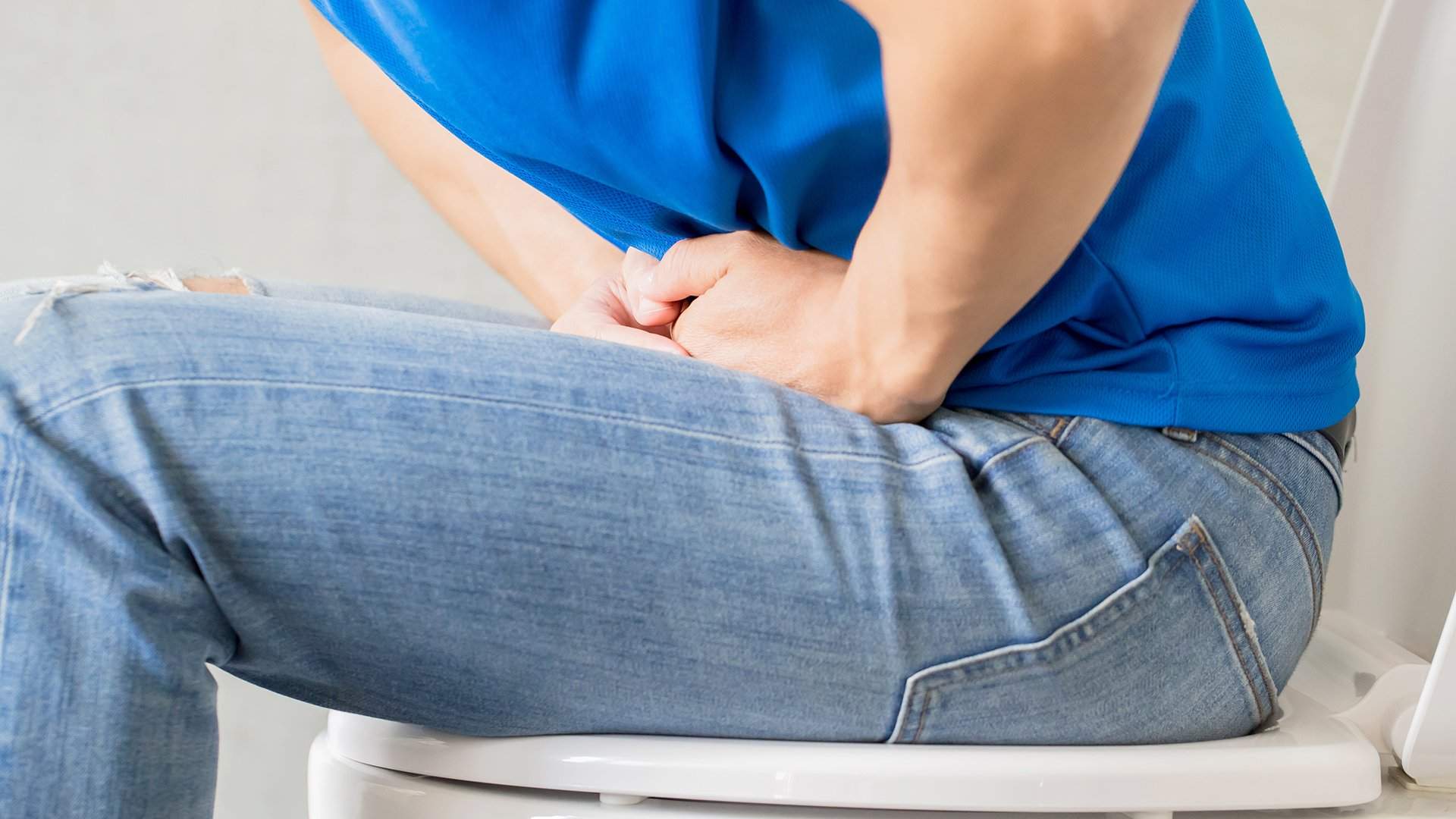



 There are many laxative choices. Ask your pharmacist or doctor for help in making a choice. Do not use laxatives for more than two weeks without calling your doctor. Overuse of laxatives can worsen your symptoms.
There are many laxative choices. Ask your pharmacist or doctor for help in making a choice. Do not use laxatives for more than two weeks without calling your doctor. Overuse of laxatives can worsen your symptoms. Fiber and water help the colon pass stool. Most of the fiber in fruits is found in the skins, such as in apples. Fruits with seeds you can eat, like strawberries, have the most fiber. Bran is a great source of fiber. Eat bran cereal or add bran cereal to other foods, like soup and yogurt. People with constipation should eat between 18 and 30 grams of fiber every day.
Fiber and water help the colon pass stool. Most of the fiber in fruits is found in the skins, such as in apples. Fruits with seeds you can eat, like strawberries, have the most fiber. Bran is a great source of fiber. Eat bran cereal or add bran cereal to other foods, like soup and yogurt. People with constipation should eat between 18 and 30 grams of fiber every day.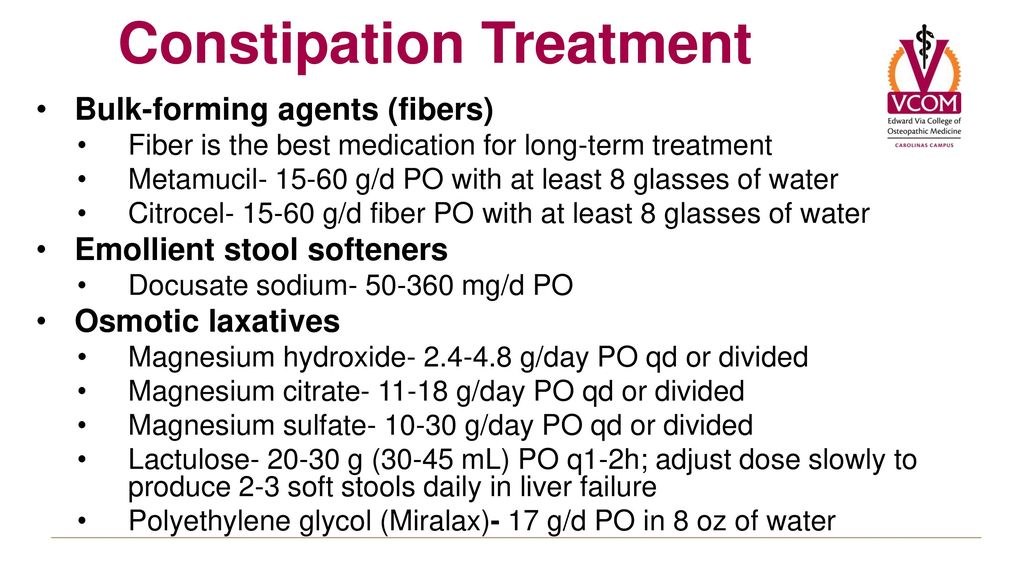


 Rarely, a provider must remove a segment of the damaged or dead intestine.
Rarely, a provider must remove a segment of the damaged or dead intestine. This muscle weakness means that you’re more likely to accidently leak urine when you move around. For many people, leakage issues happen when they laugh, cough, sneeze, run, jump or lift things. These actions all place pressure on your bladder. Without the support of strong pelvic muscles, you’re more likely to leak urine. Women who have given birth are at a higher risk of having stress incontinence. Men who have had prostate surgery may develop stress incontinence.
This muscle weakness means that you’re more likely to accidently leak urine when you move around. For many people, leakage issues happen when they laugh, cough, sneeze, run, jump or lift things. These actions all place pressure on your bladder. Without the support of strong pelvic muscles, you’re more likely to leak urine. Women who have given birth are at a higher risk of having stress incontinence. Men who have had prostate surgery may develop stress incontinence.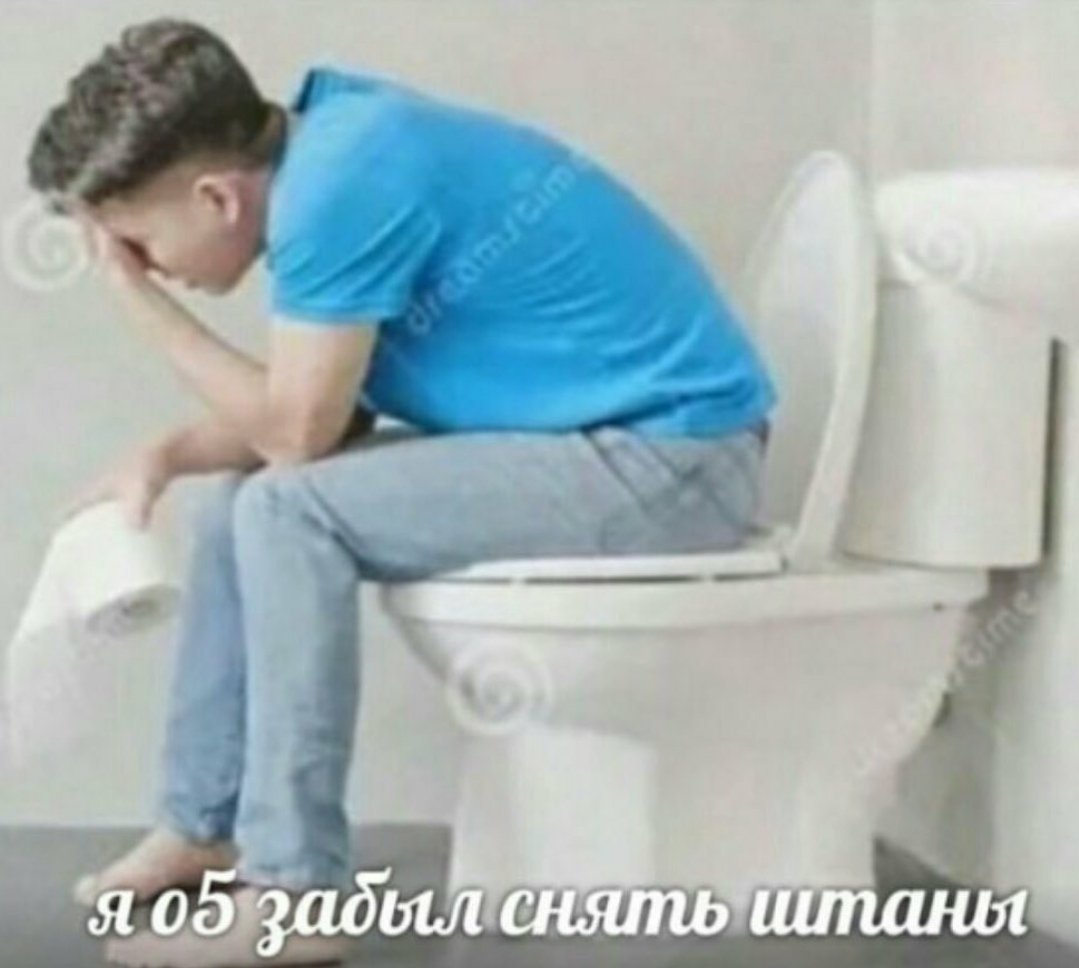 This type of incontinence is more common in people with chronic conditions like multiple sclerosis (MS), stroke or diabetes. This may also occur in men with a large prostate.
This type of incontinence is more common in people with chronic conditions like multiple sclerosis (MS), stroke or diabetes. This may also occur in men with a large prostate.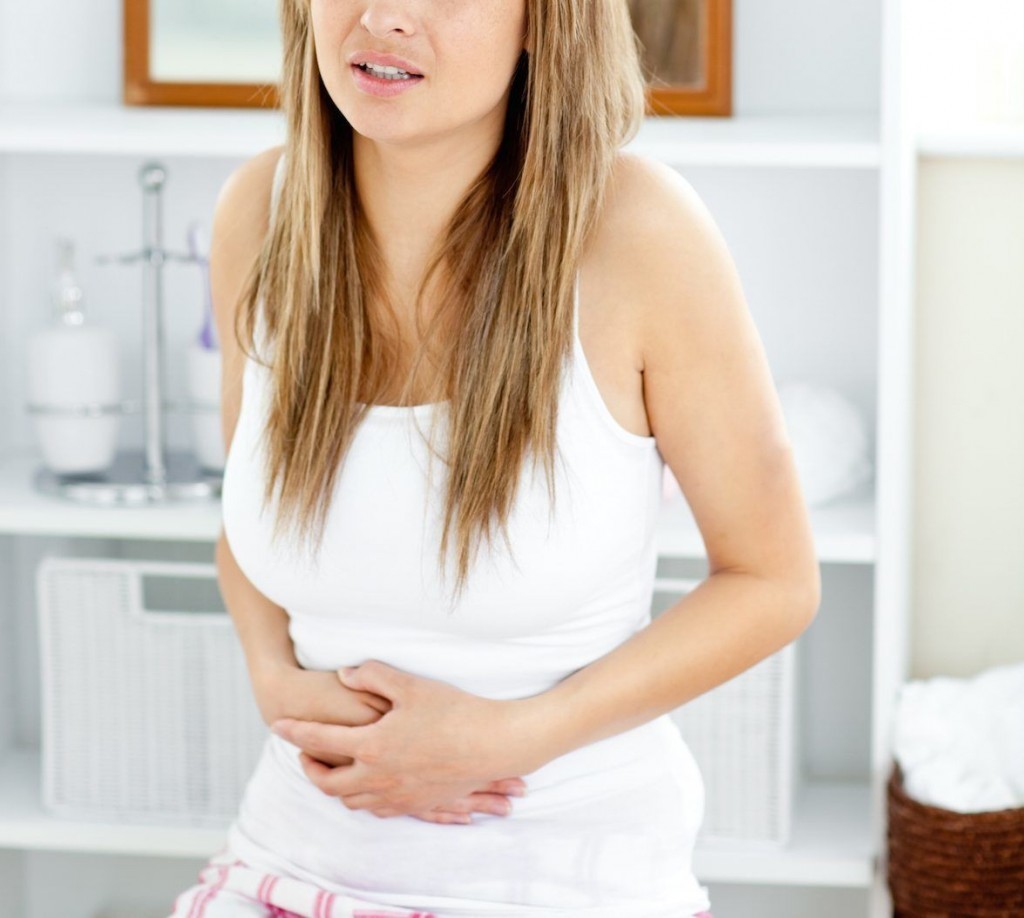 If you stop drinking these beverages, your need to urinate frequently typically goes down.
If you stop drinking these beverages, your need to urinate frequently typically goes down.
 This could include doing a pelvic exam if you’re a woman or checking the size of a man’s prostate.
This could include doing a pelvic exam if you’re a woman or checking the size of a man’s prostate. This tool allows your provider to see a lot of detail inside your body.
This tool allows your provider to see a lot of detail inside your body.
